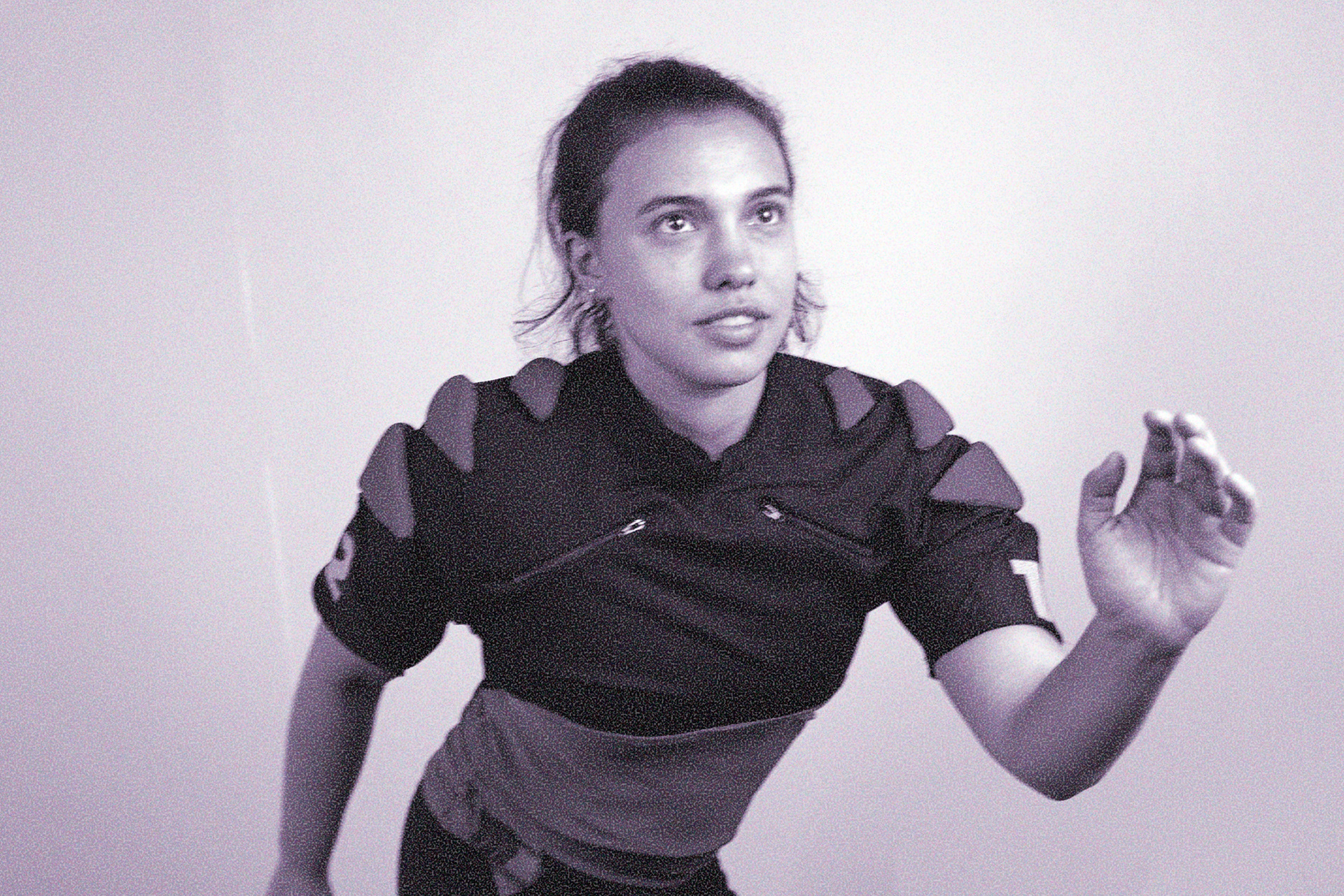
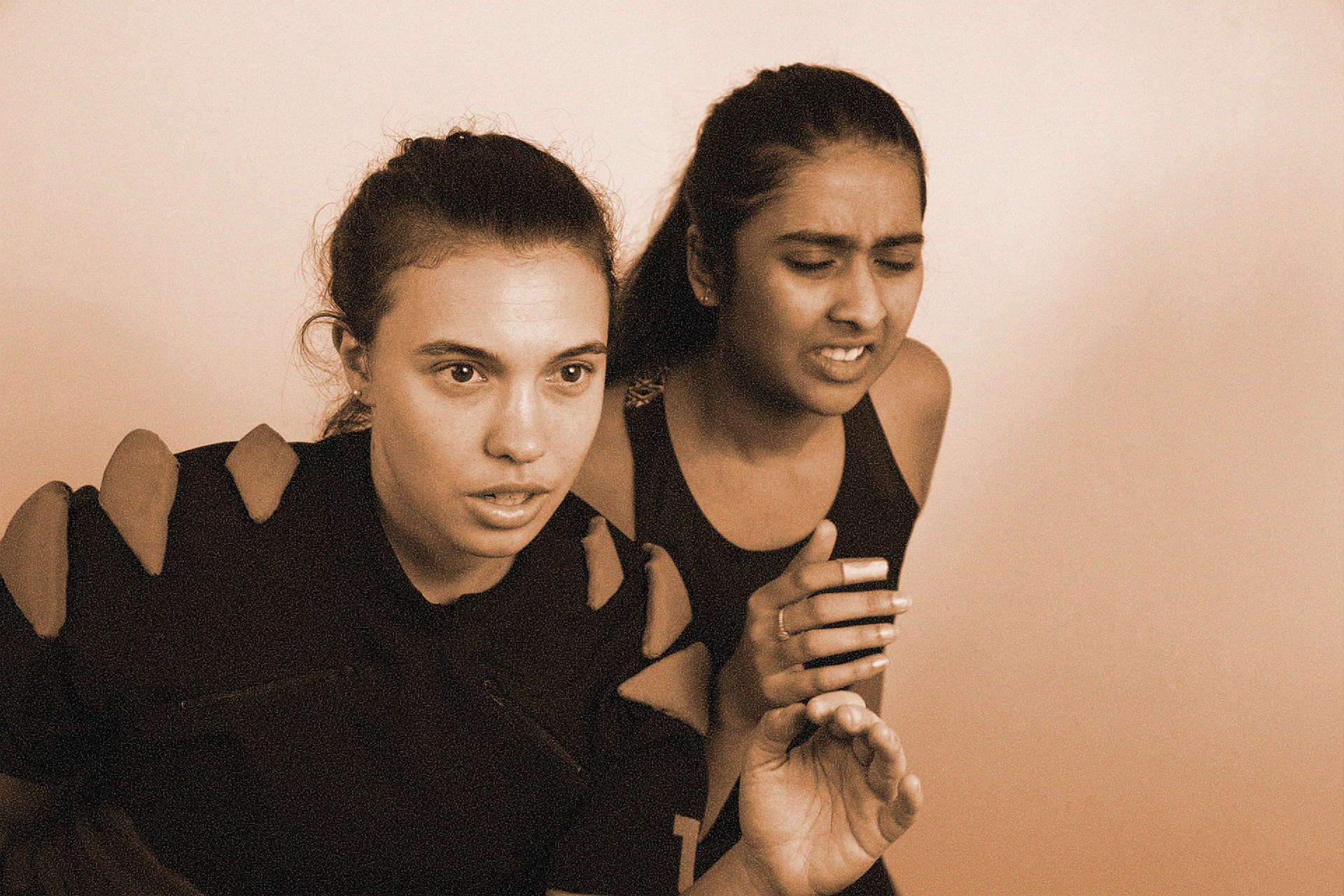
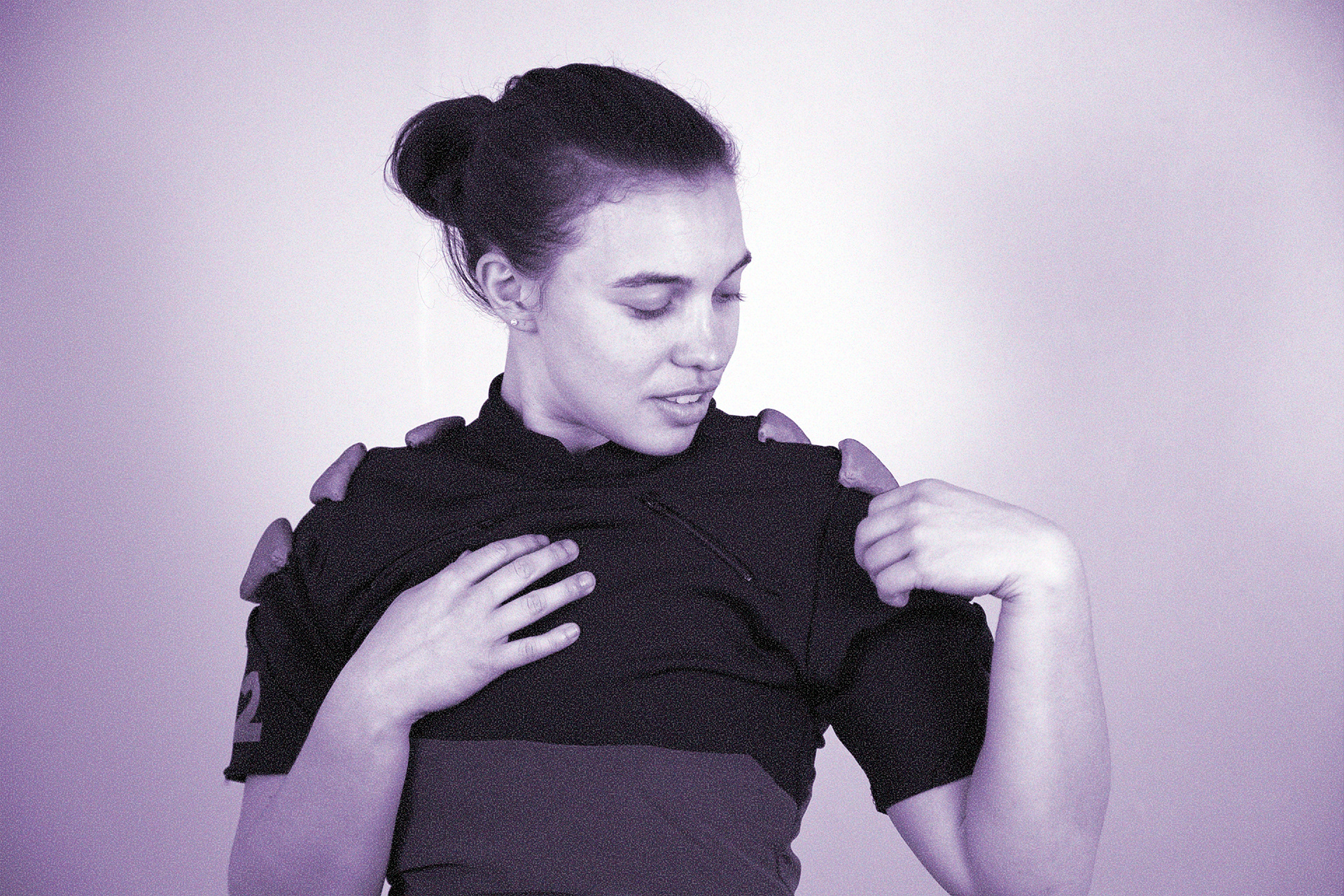
How it works
My biggest contribution to the engineering of the boutfit was in designing the compression element: two zippers on the front of the shirt. The zippers can be left open to give the shirt a looser fit when putting it on or taking it off, but when zipped they pull fabric tightly across the shoulder, gently-but-firmly compressing the joint. This stabilizes the shoulder during play, protecting it from injuries caused by frequent collisions with other players.
What is roller derby?
Roller derby is a fast-paced, full-contact sport played competitively by more 100,000 women (and some men) in more than 50 countries across the globe (from The Frogmouth Blog). It is highly standardized and technical, with thick rule-books and attentive referees.
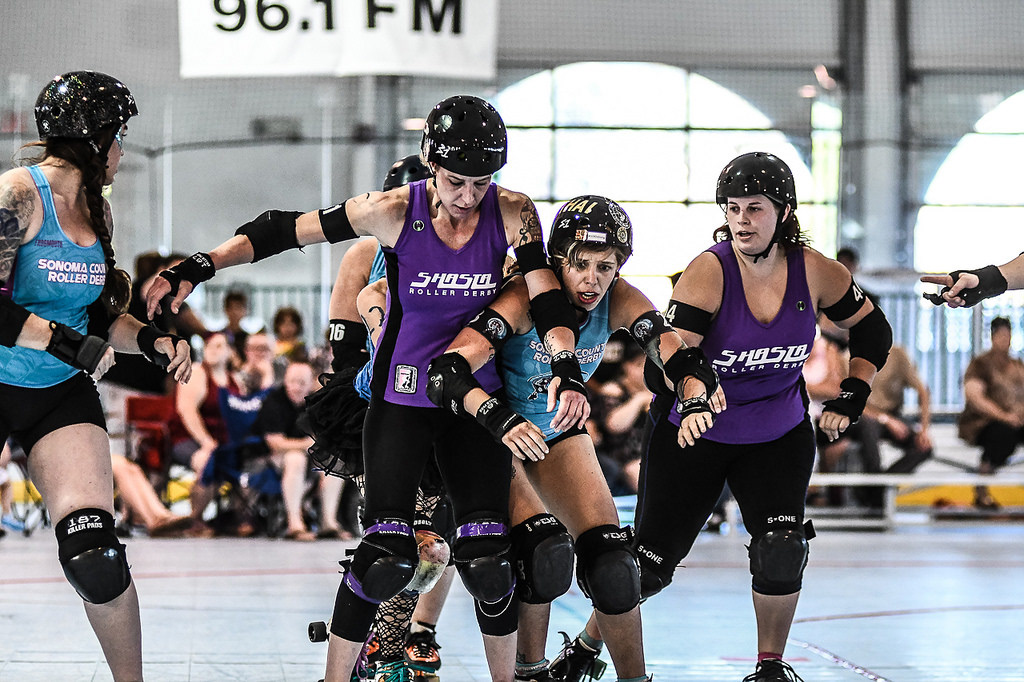
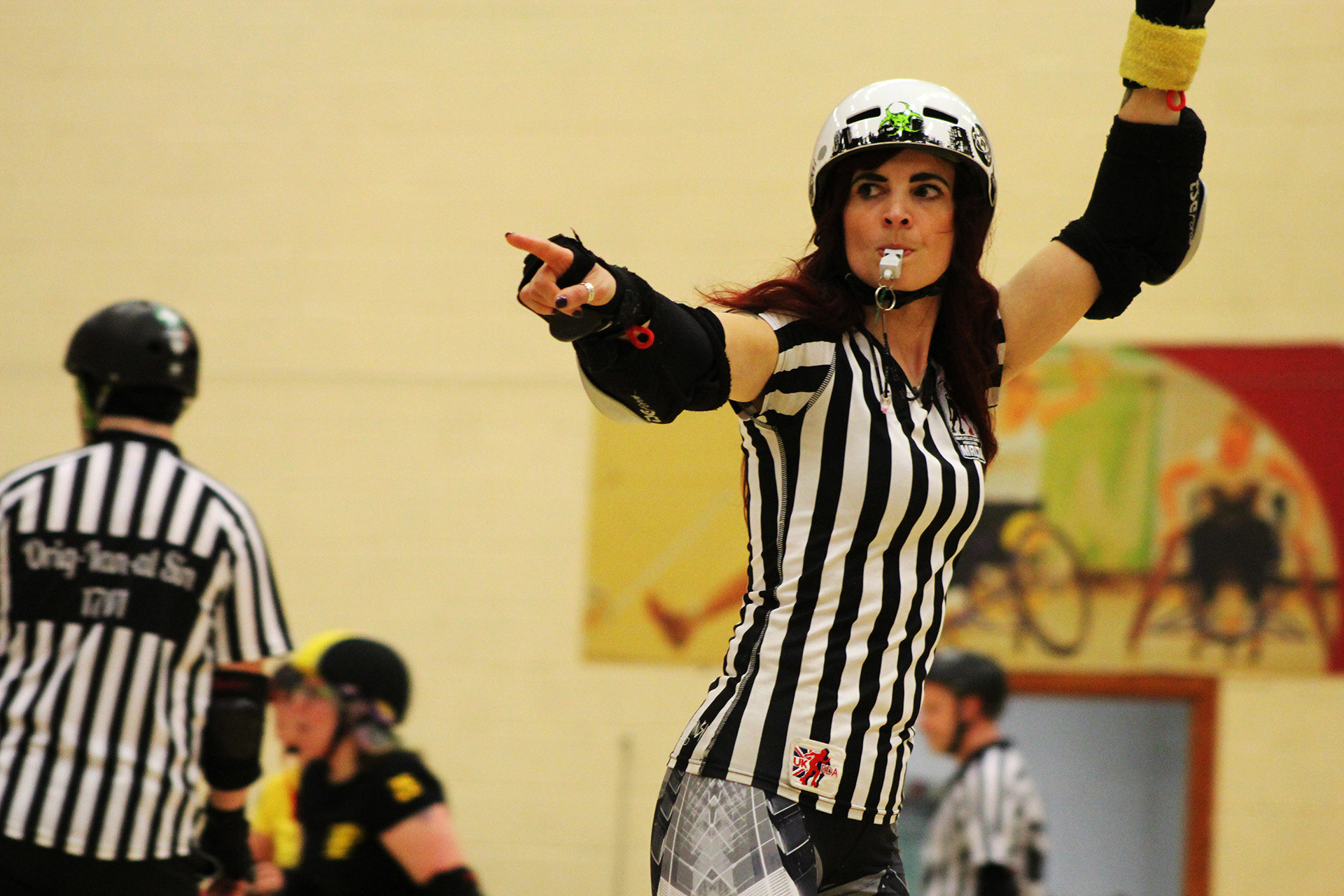
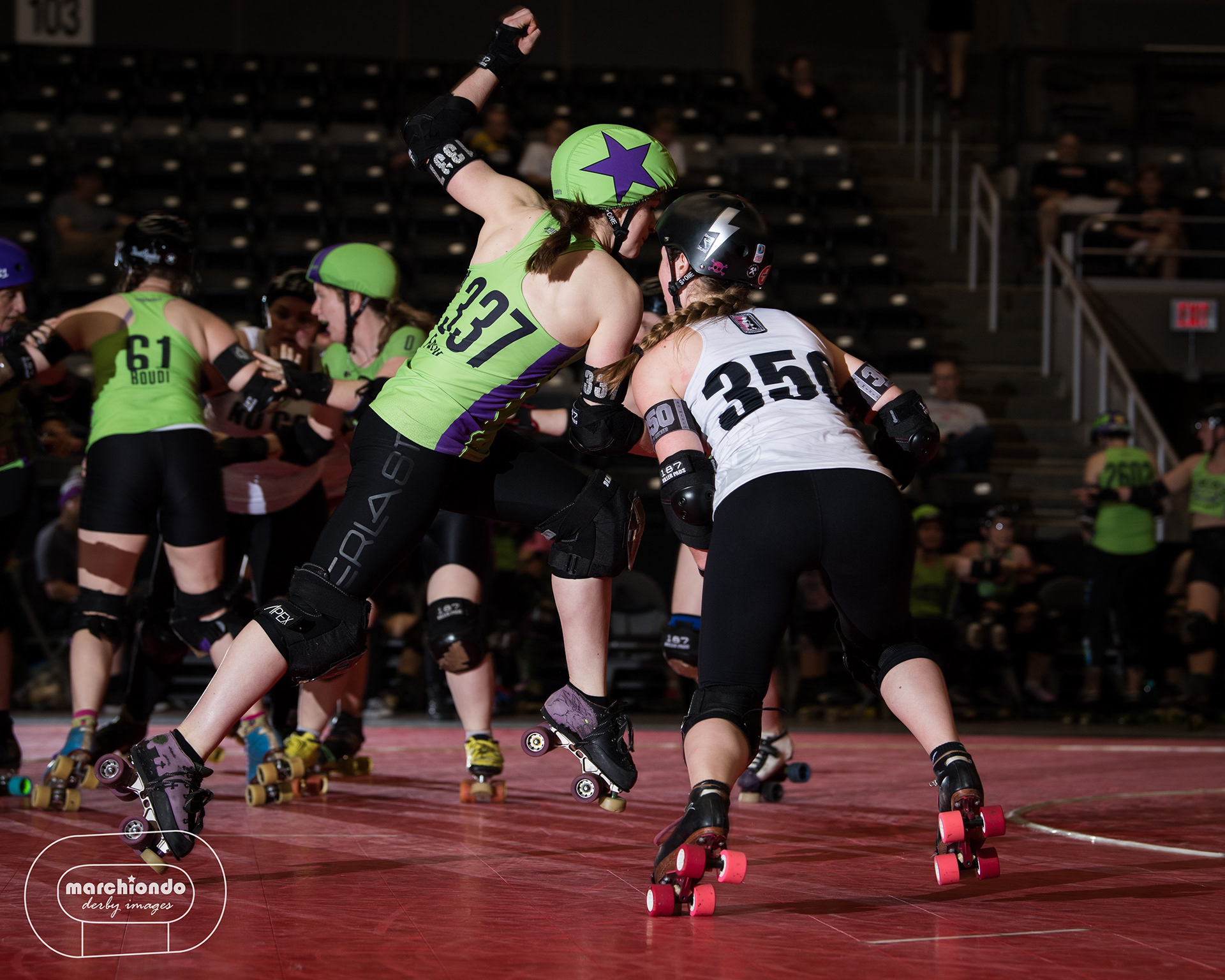
Roller derby games are called "bouts," which are comprised of sections of play called "jams." During the jam, each of the two teams fields five players: one jammer, one pivot, and three blockers. To score points, the jammers compete with each other to get through the their opposing team's "pack" comprised of the blockers and pivot. When necessary, the pivot can switch positions with the jammer. Bouts are held on flat or banked tracks (depending on the style of play for the league), which players roll around on four-wheeled roller skates.
There are numerous rules against fouls, a rigorous course and test to be approved for competitive play, and derbiers spend up to 20 hours per week training and putting in league hours; there is not a lot of money in roller derby, so players must put in volunteer time to keep their organizations running.
While not all derby athletes buy from derby brands to get the many pieces of equipment they need, many derby brands exist to support the specific needs of this sport.
Diving in
We had a lot to learn about derby. Fortunately, there are some fantastic derby resources in the New York City area. Our first stop was Five Stride Skate Shop in Brooklyn, where we chatted with some of the derby athletes who work there and learned about the overwhelming number of pieces of gear they sell.
At Five Stride Skate Shop: Different skate wheels work better on different tracks, depending on the floor material.
At Five Stride Skate Shop: the repair section highlighted the culture of repair and maintenance important to derbiers.
We also interviewed four derby athletes to learn more about their pains and gains from being part of this sport. Their dedication to the sport made a large impact on us, and gave us a drive to do them justice with this project.
We also went to a bout, which was a fun showcase scrimmage of one of New York's developmental teams, the Diamonds. This team feeds into the top New York team, Gotham Girls—the third best flat track roller derby team in the world!
At the bout, we were impressed by both the physicality and the technicality of the sport. Players would get knocked down, but get right back up again. Plus, it was fun to watch.
The synthesis of all of our research led us to three main areas of need: derby widows (the term for non-derby spouses or partners who often feel abandoned due to the time-intensity of derby), injury prevention and treatment, and support for the legitimacy of the sport. The injury category offered the most opportunities for developing physical products to solve the problems.
We learned about the prevalence of injuries from all of our sources, but the following quote from one of our interviewees turned us on to shoulders as an area of underserved need.
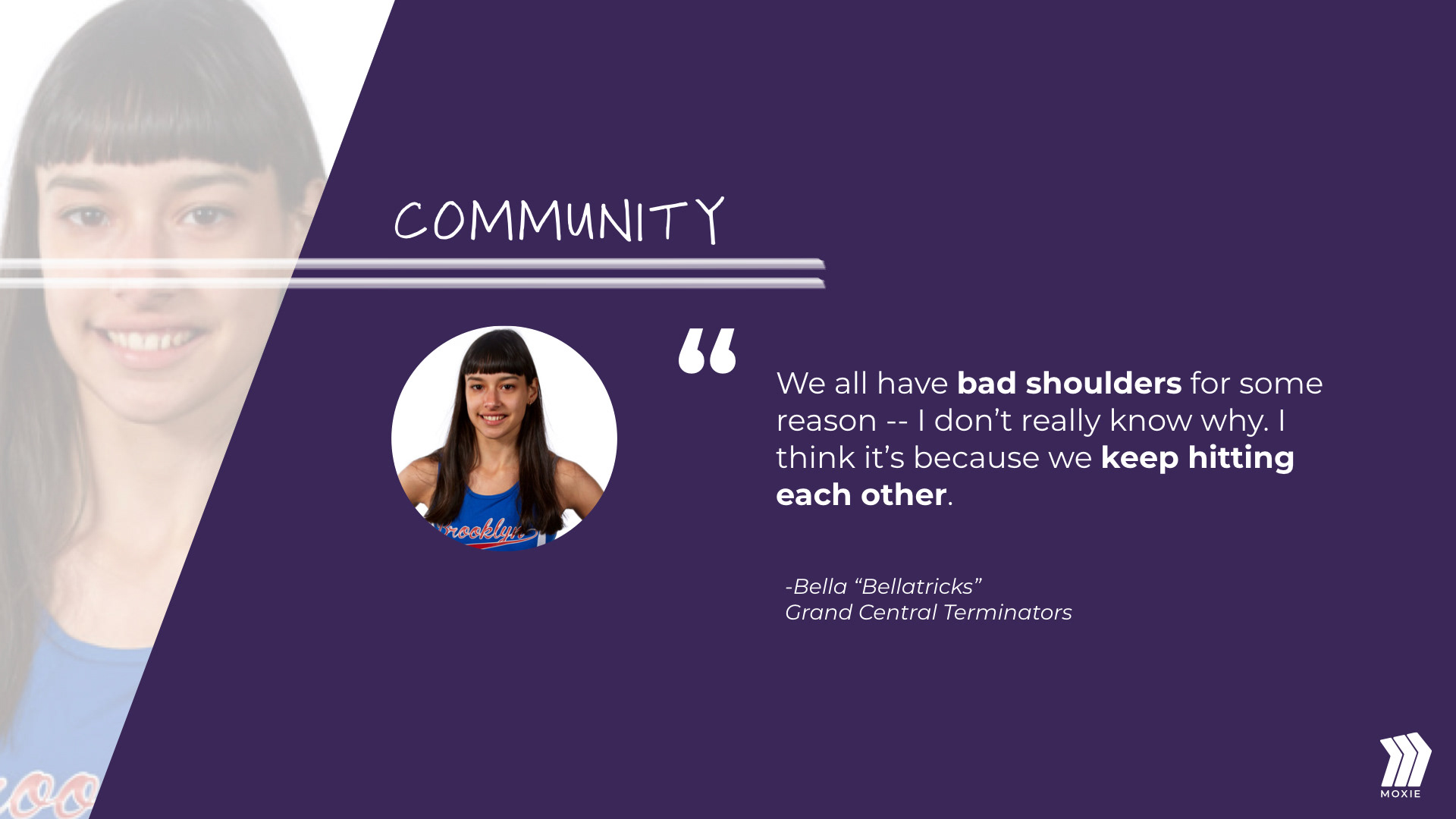
Arms and shoulders are less critical to derby than legs and hips, so athletes spend less time training to strengthen the muscles in those body parts. However, even minor shoulder injuries, when repeated and sustained over time, can keep players from performing their best on the track and may even keep them on the sideline. We realized that a preventative care product could help.
Creating a uniform
While learning about roller derby, we grew familiar with its struggle for legitimacy. Not only did we read about it and hear about it from our interviewees, but we also faced it first-hand in communicating the sport to our classmates, instructor, and critics. We received the feedback that if roller derby had a unique silhouette, more distinct than the tank tops and spandex that the athletes currently wear, if might help legitimize the sport.
With that in mind, we began developing Moxie, a uniform designed specifically for roller derby.
The fabric trail
We left a long trail of fabric scraps behind us in the process of making Moxie. No one on the team had ever sewed a shirt from scratch, so we had a lot to learn over several iterations of our design.
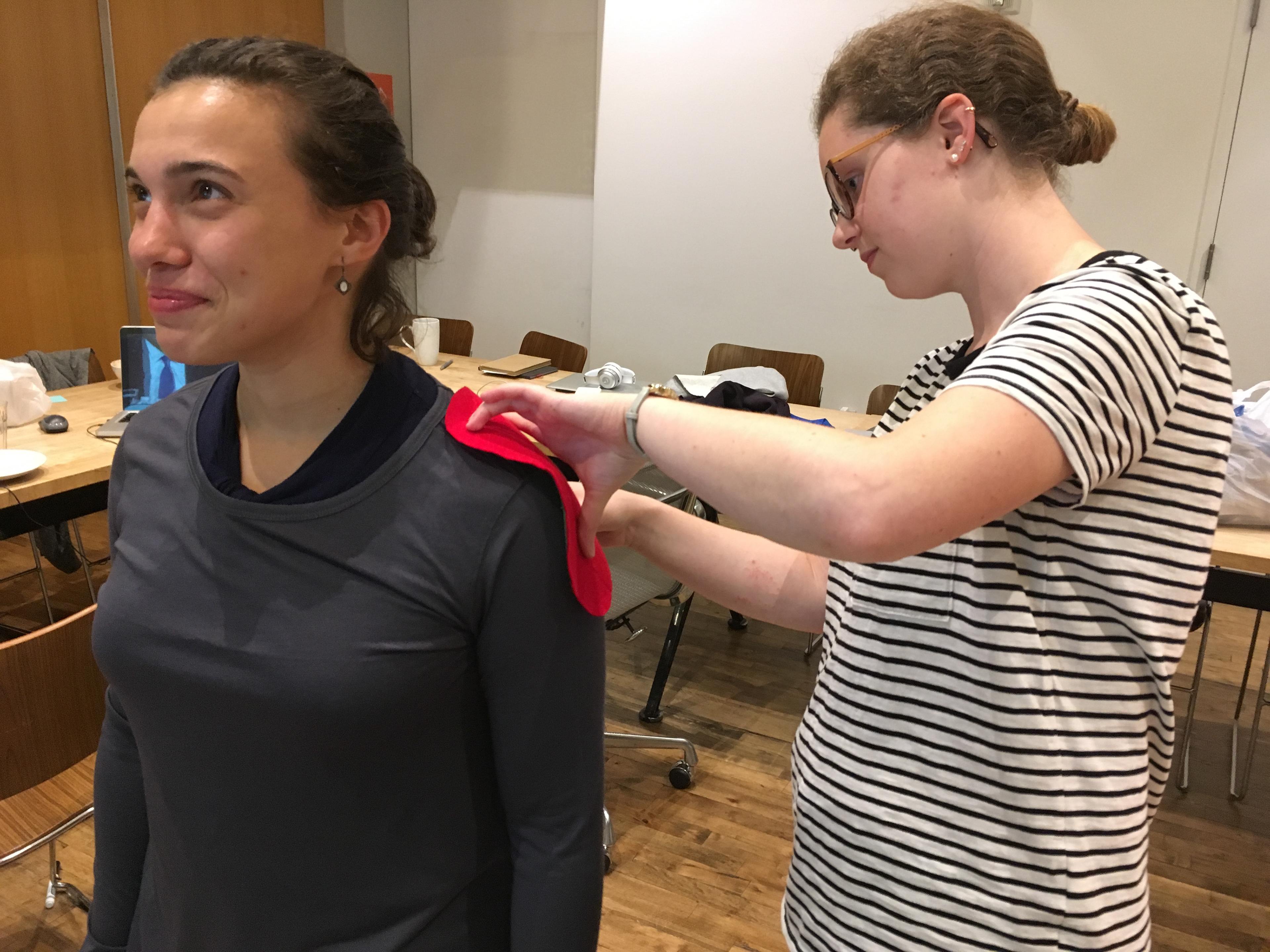
Me modeling, while Carly avoids sticking me with pins
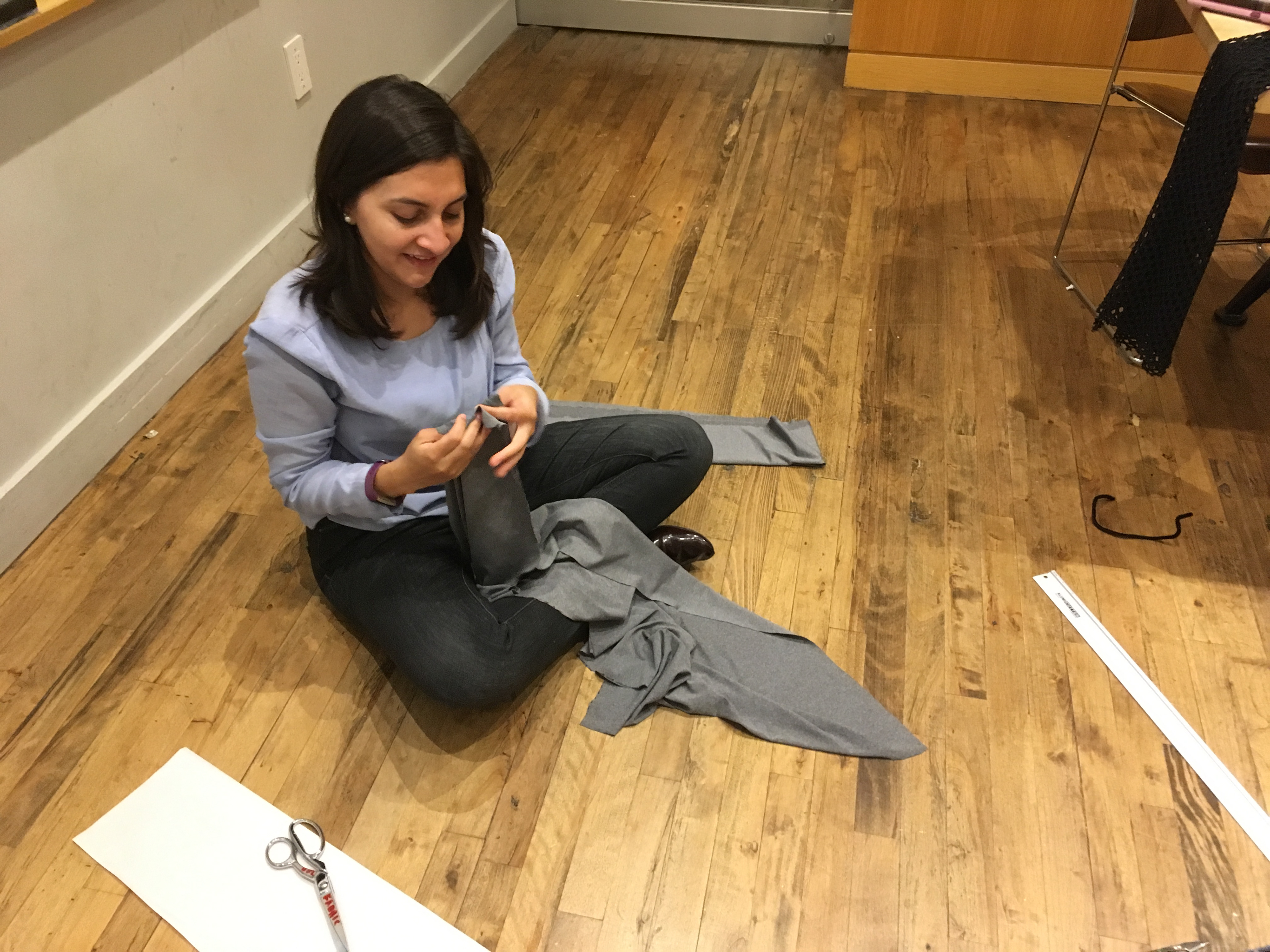
Sophie sewing shoulder patches
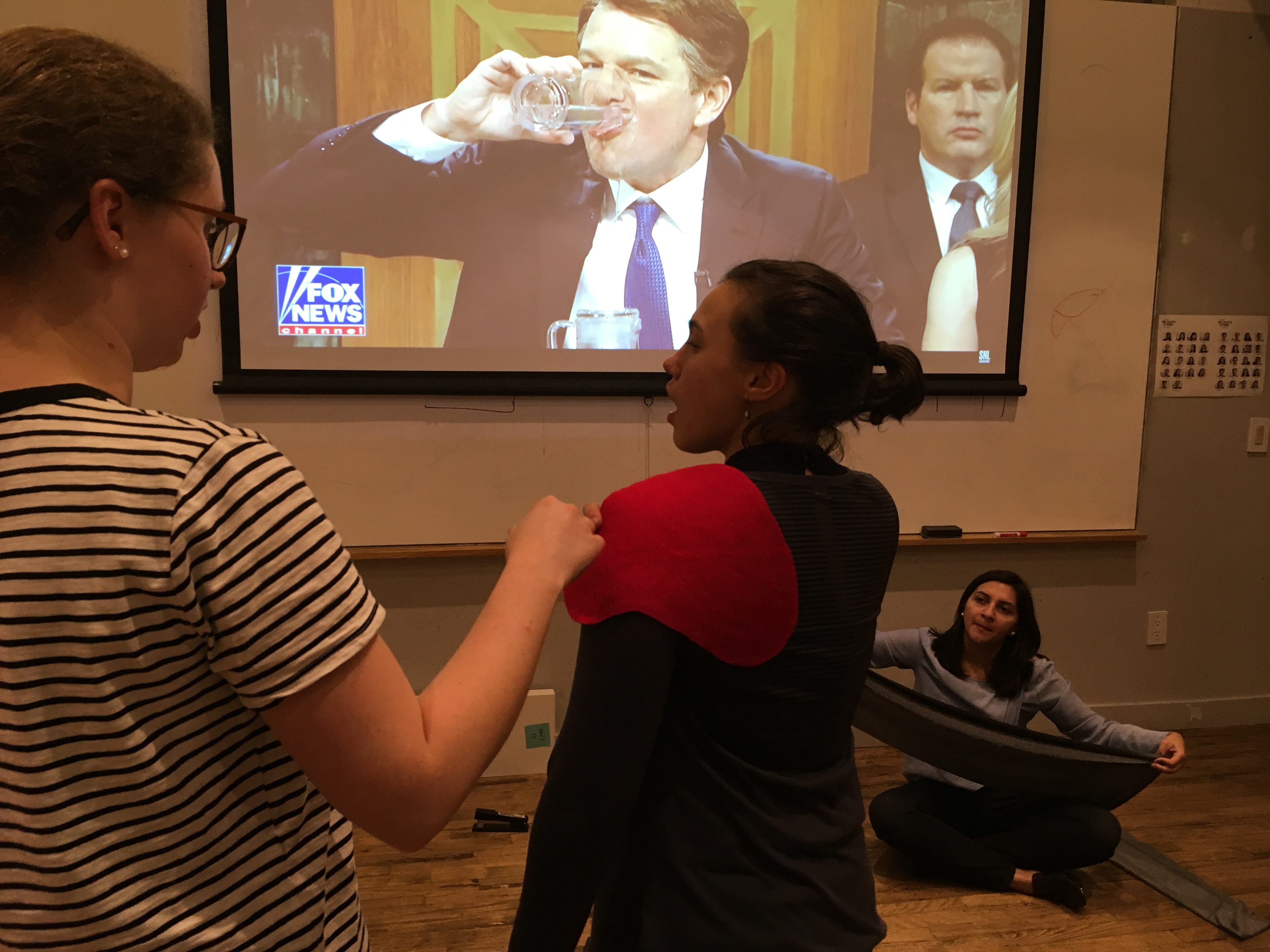
Enjoying SNL during a late night

Rhea pinning one of our initial shoulder strap concepts
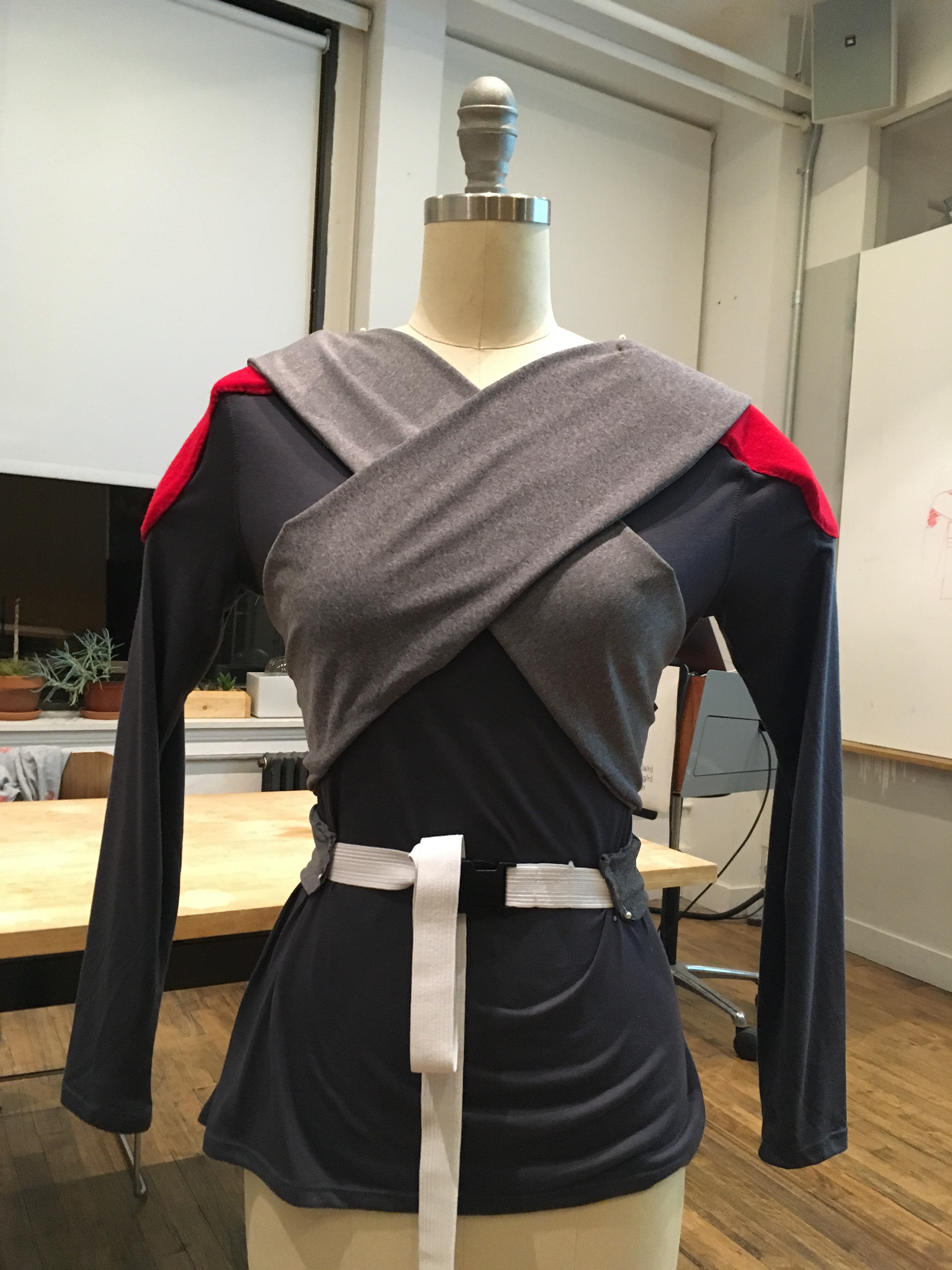
One of our initial concepts, vaguely inspired by Star Wars
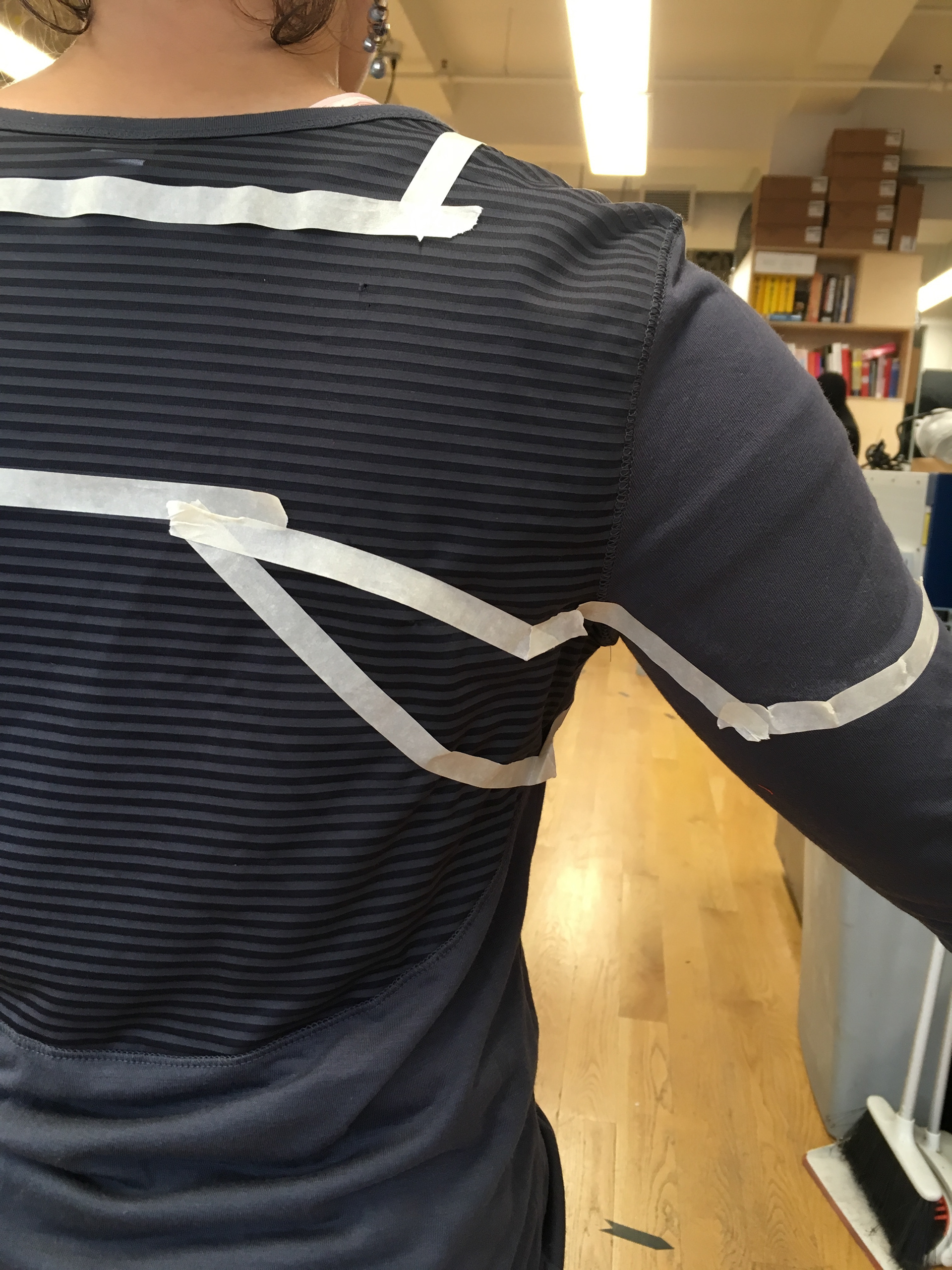
Creating a pattern
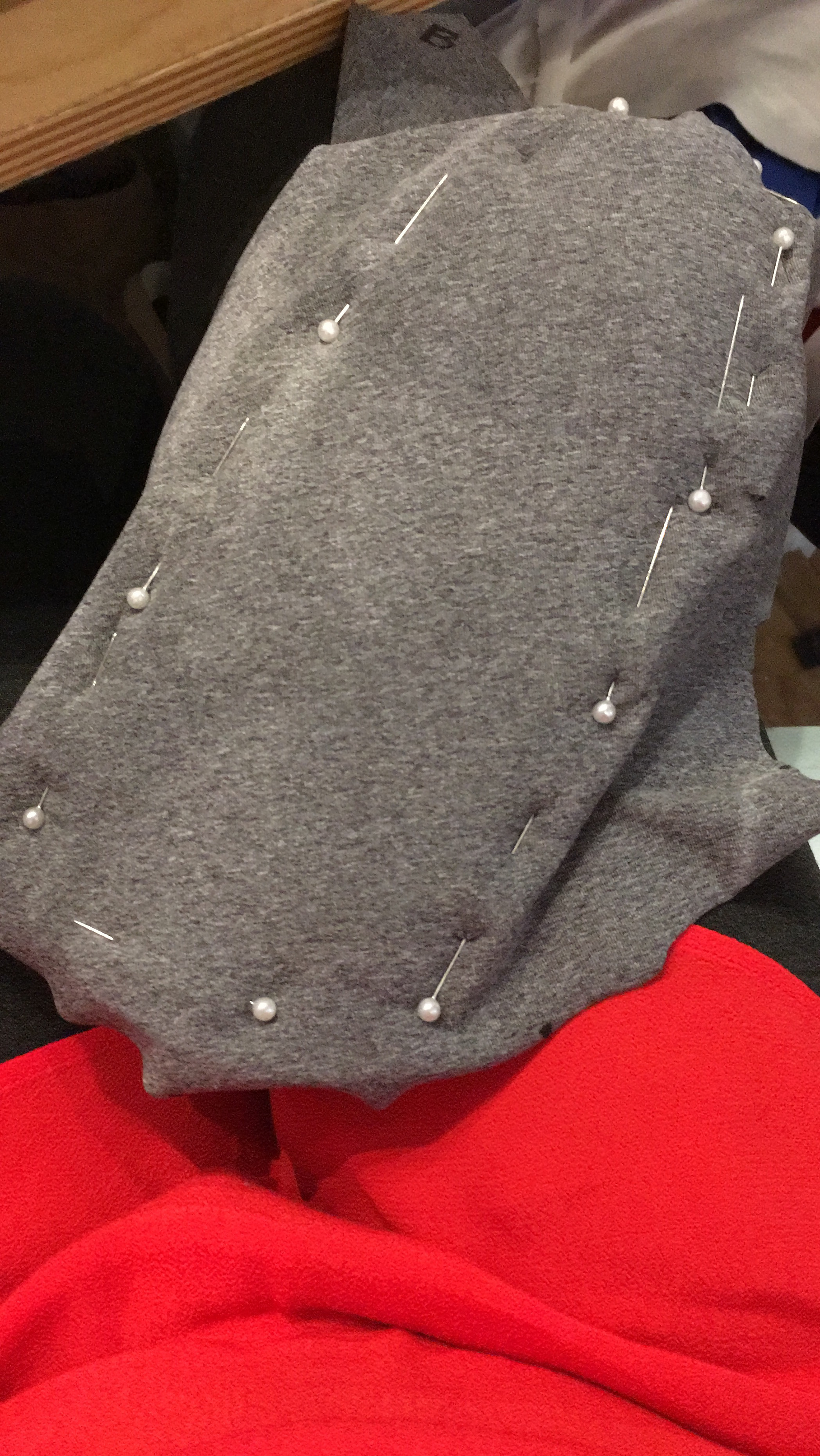
Prototyping shoulder pads
Another concept featured mesh for breathability and unique patterning
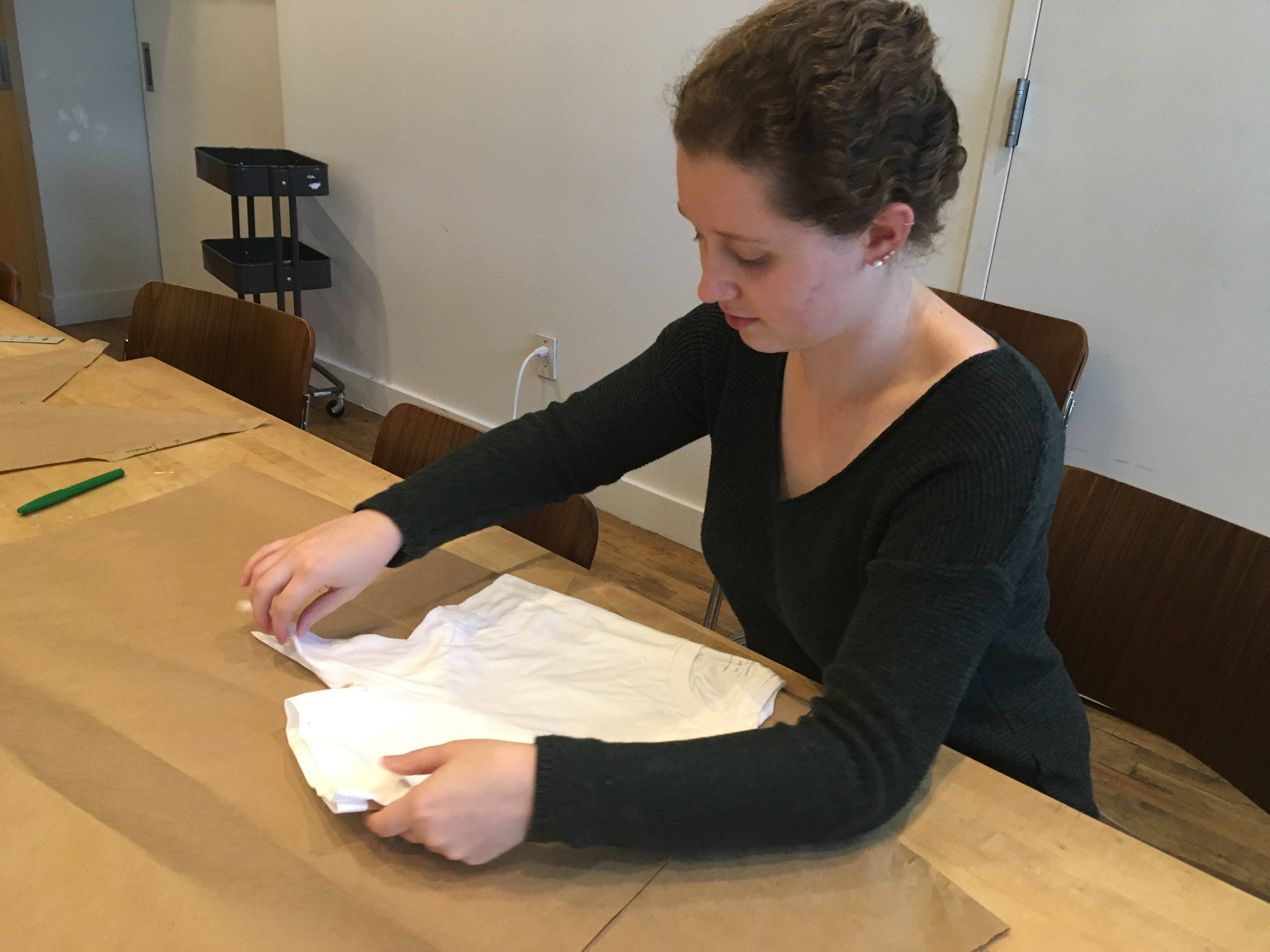
Carly works on a pattern
We learned how to be thorough in creating patterns for the separate pieces of the shirt.
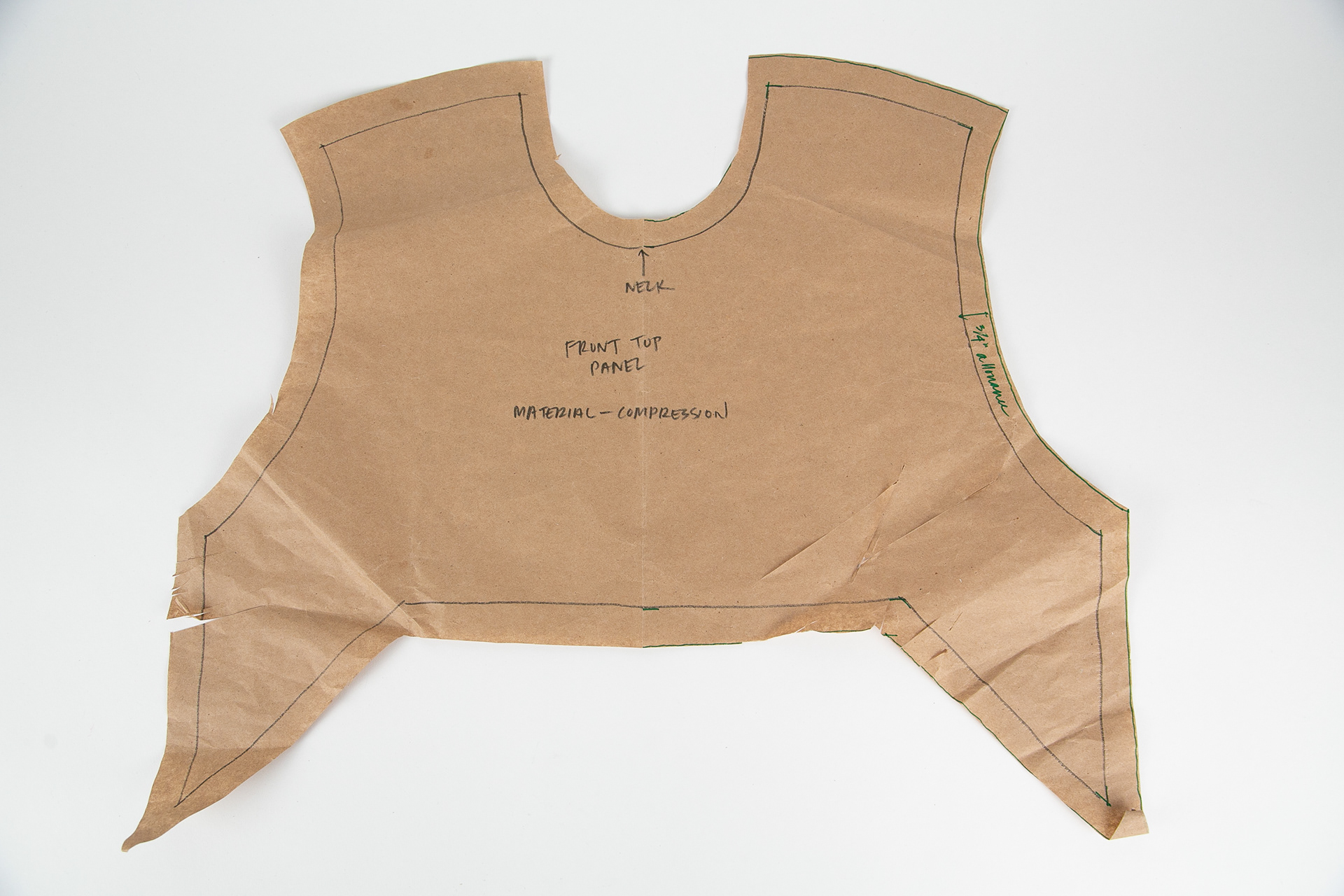
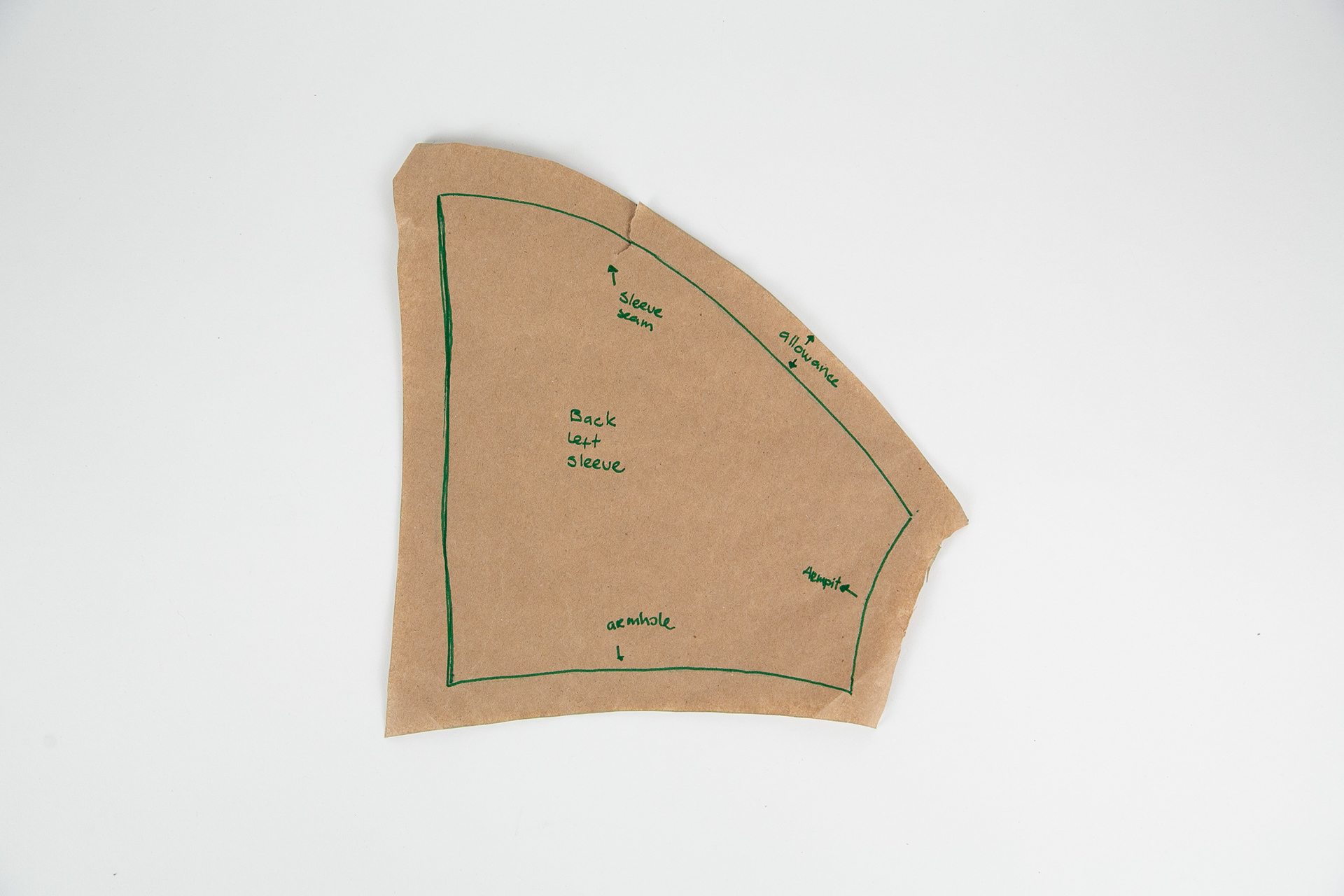
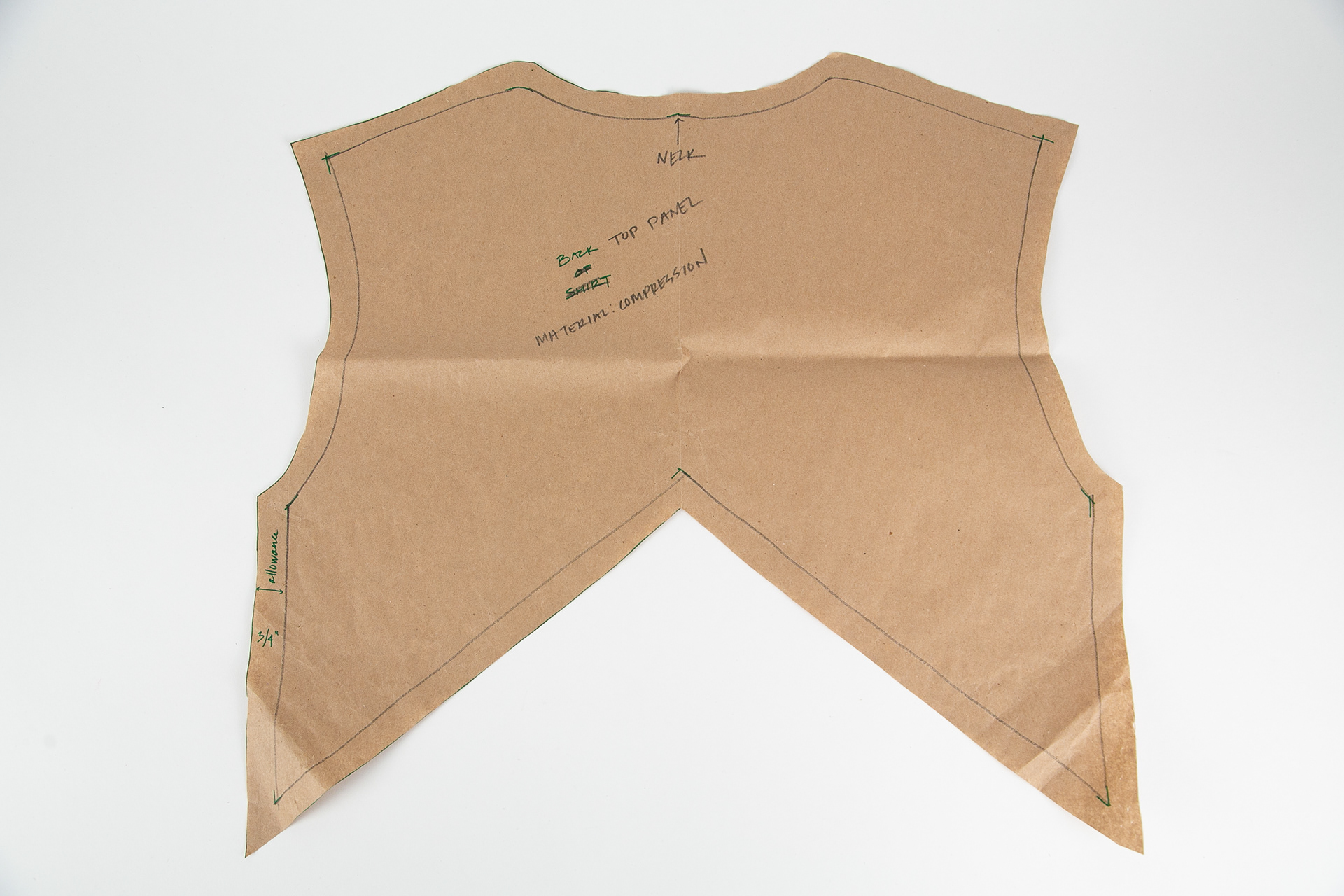
Building the brand
In addition to designing the boutfit, we needed to build a Moxie brand around it.
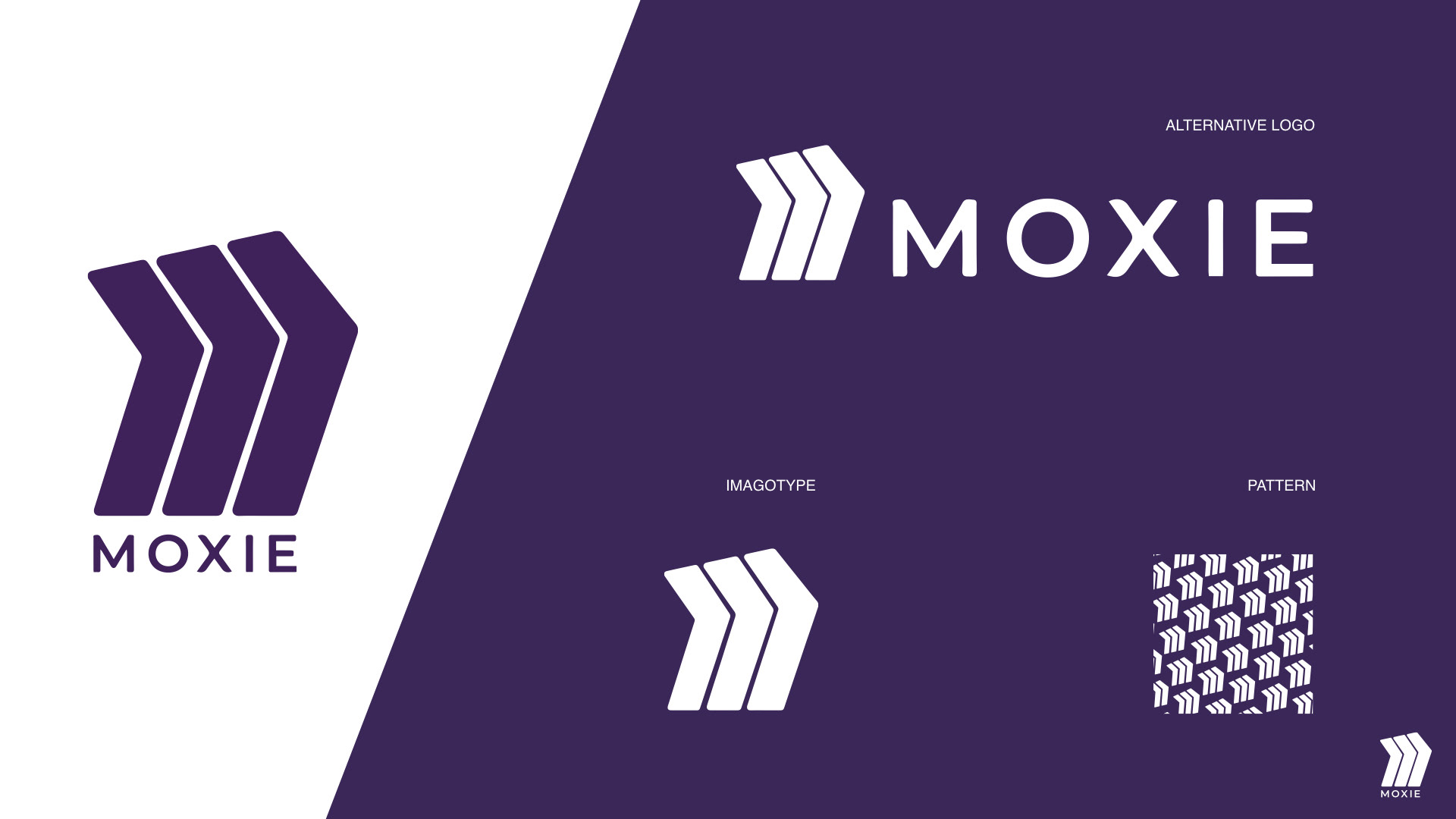
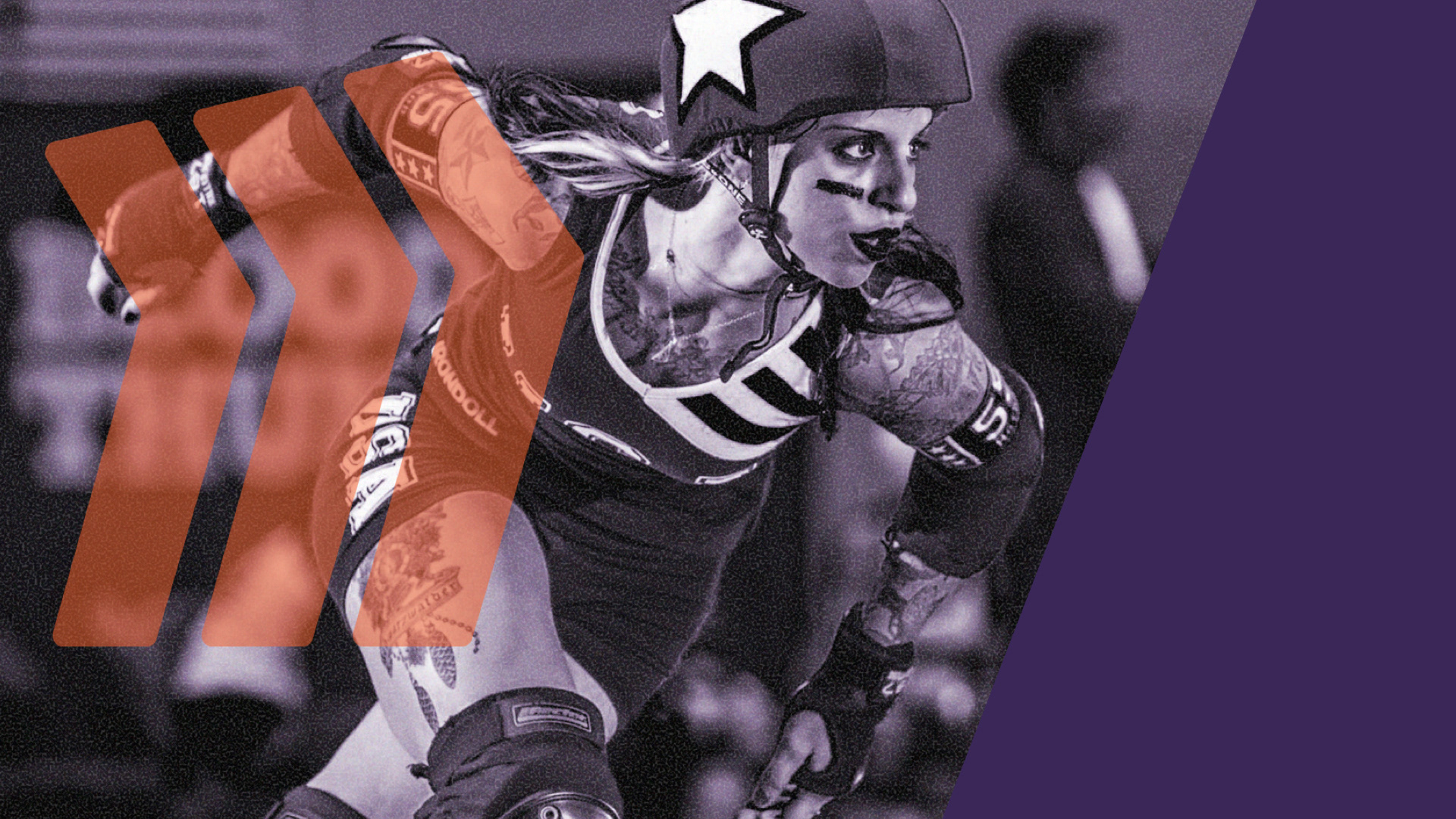
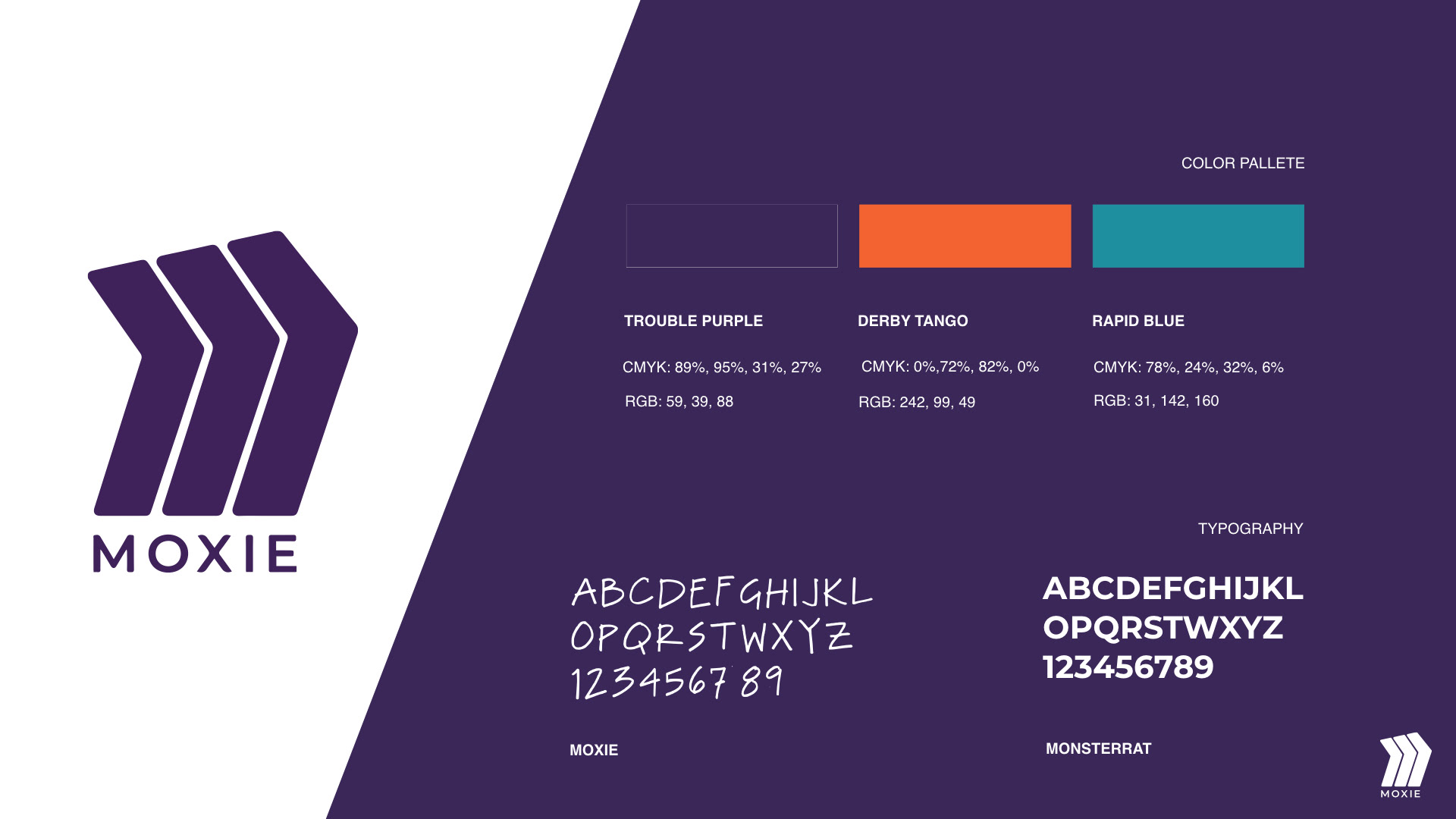
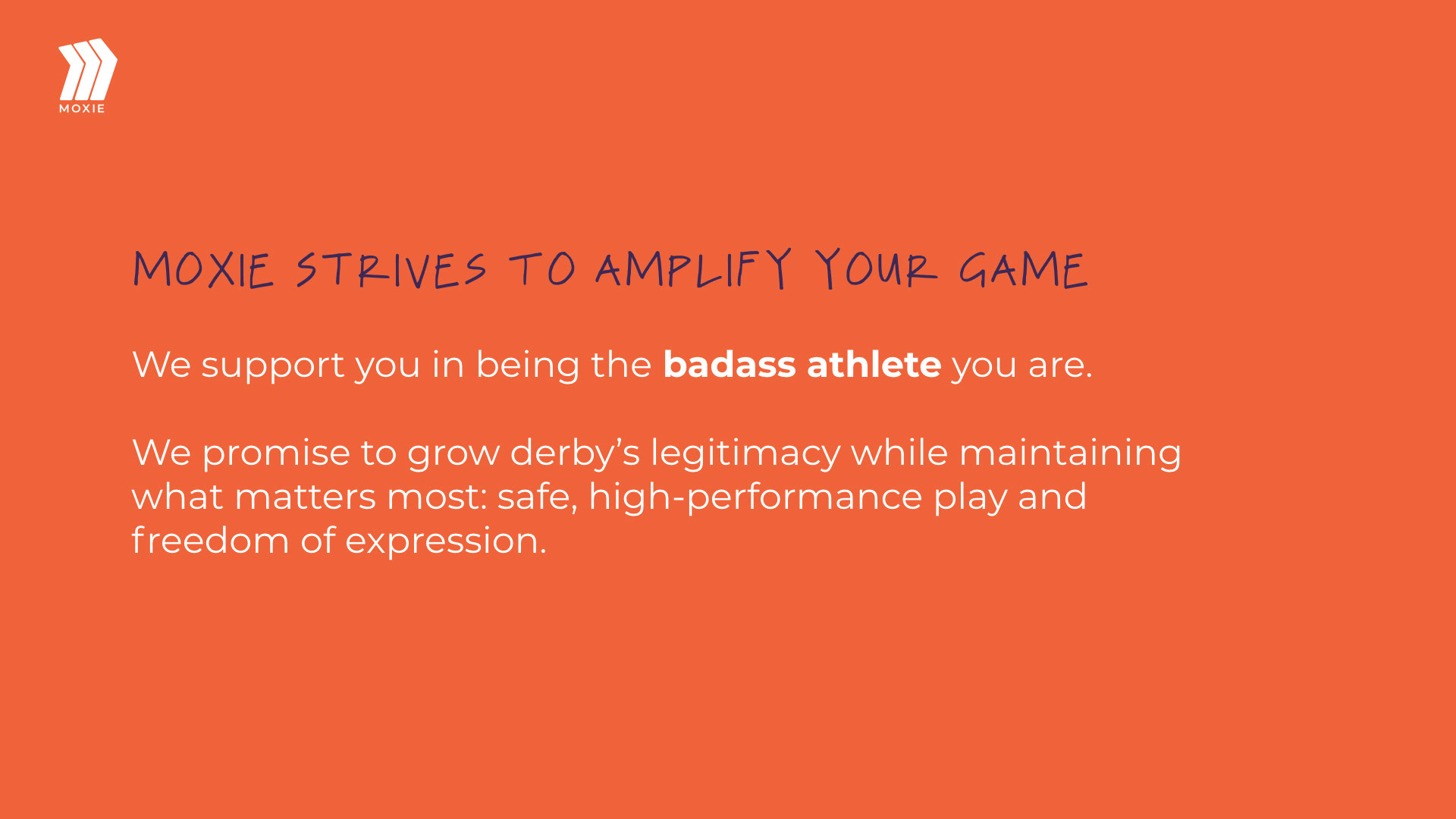
I worked on the logo iterations, as well as the photo treatments.

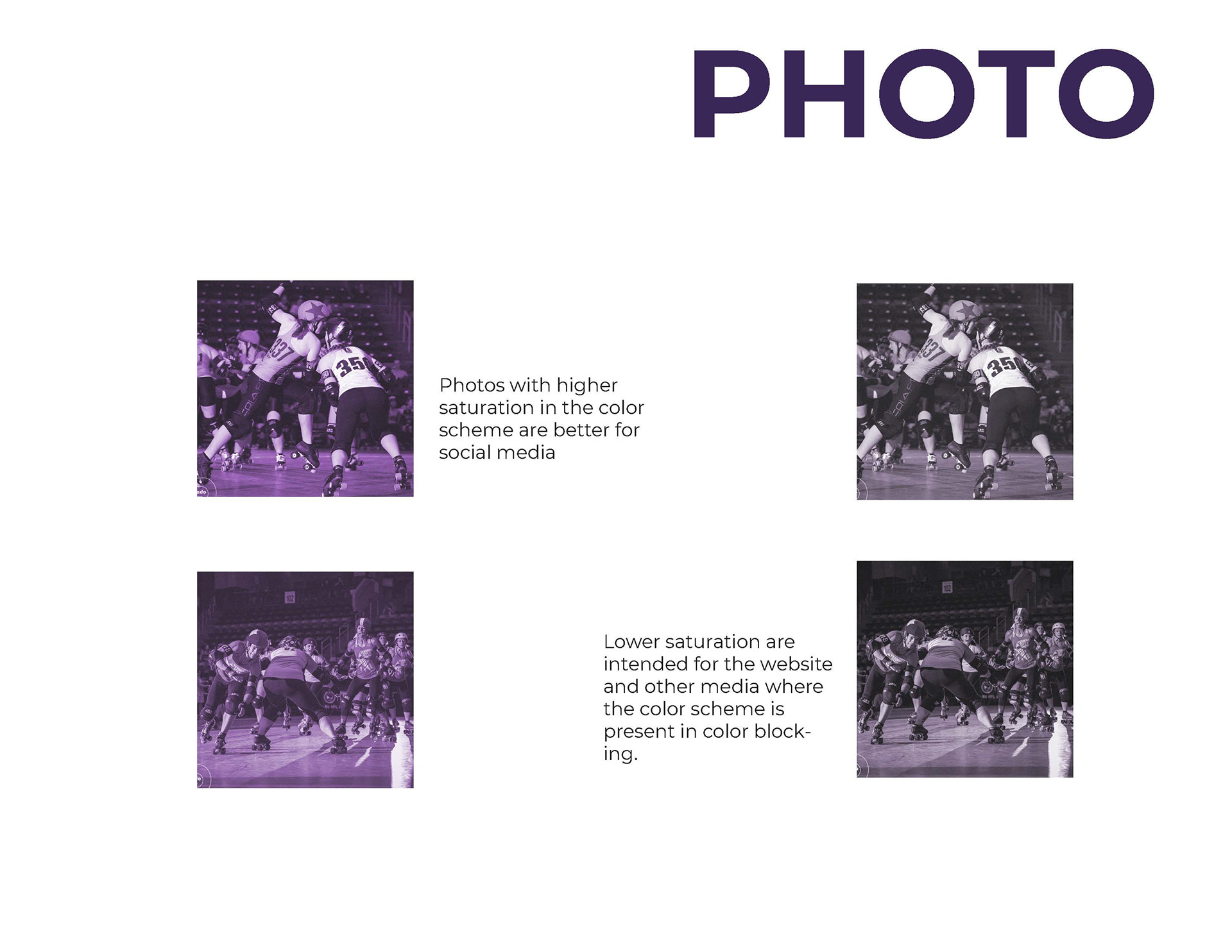
Getting it out there
We collaboratively developed a thorough strategy for promoting Moxie. Sophie illustrated the customer and online journeys below.
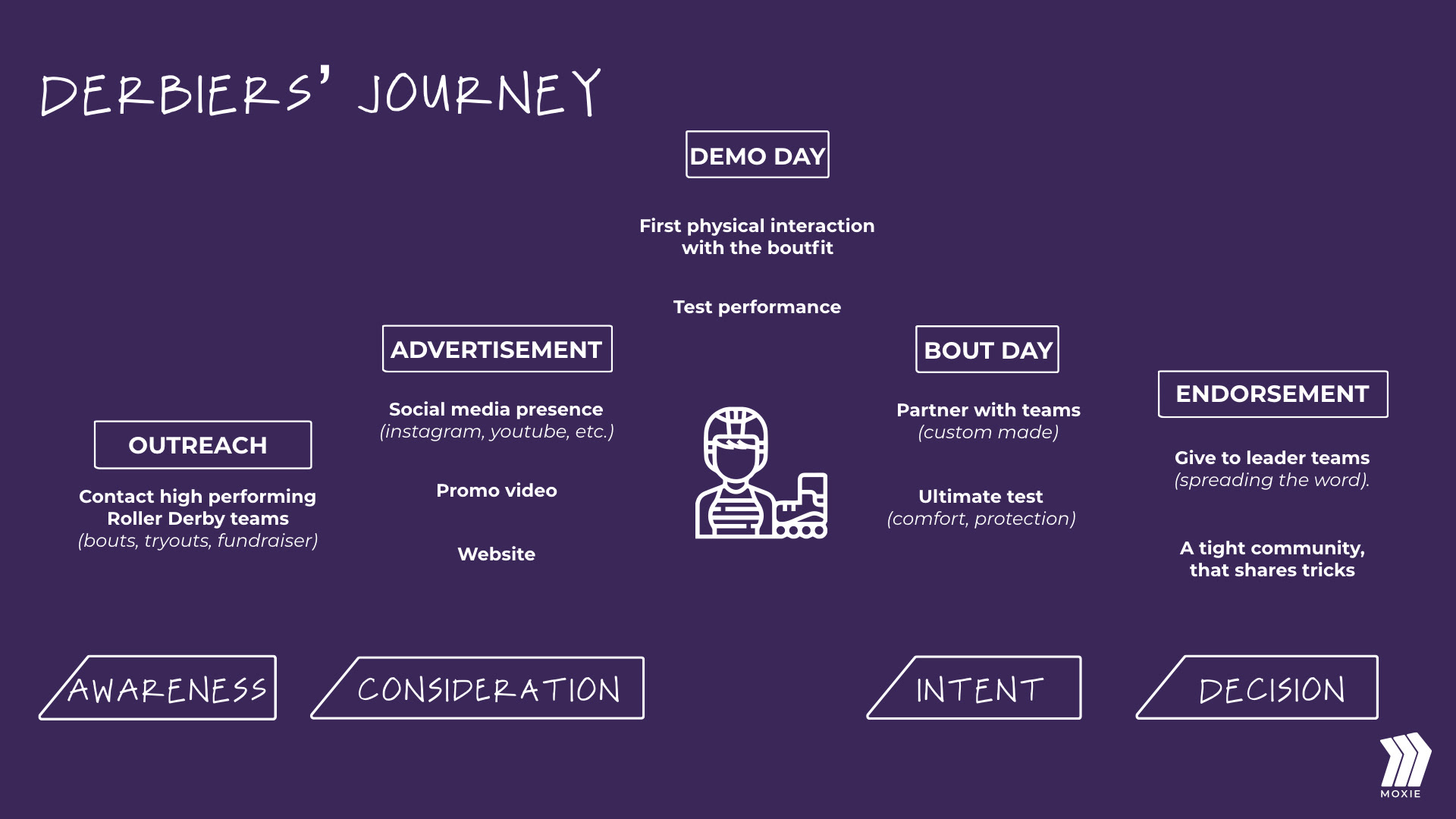
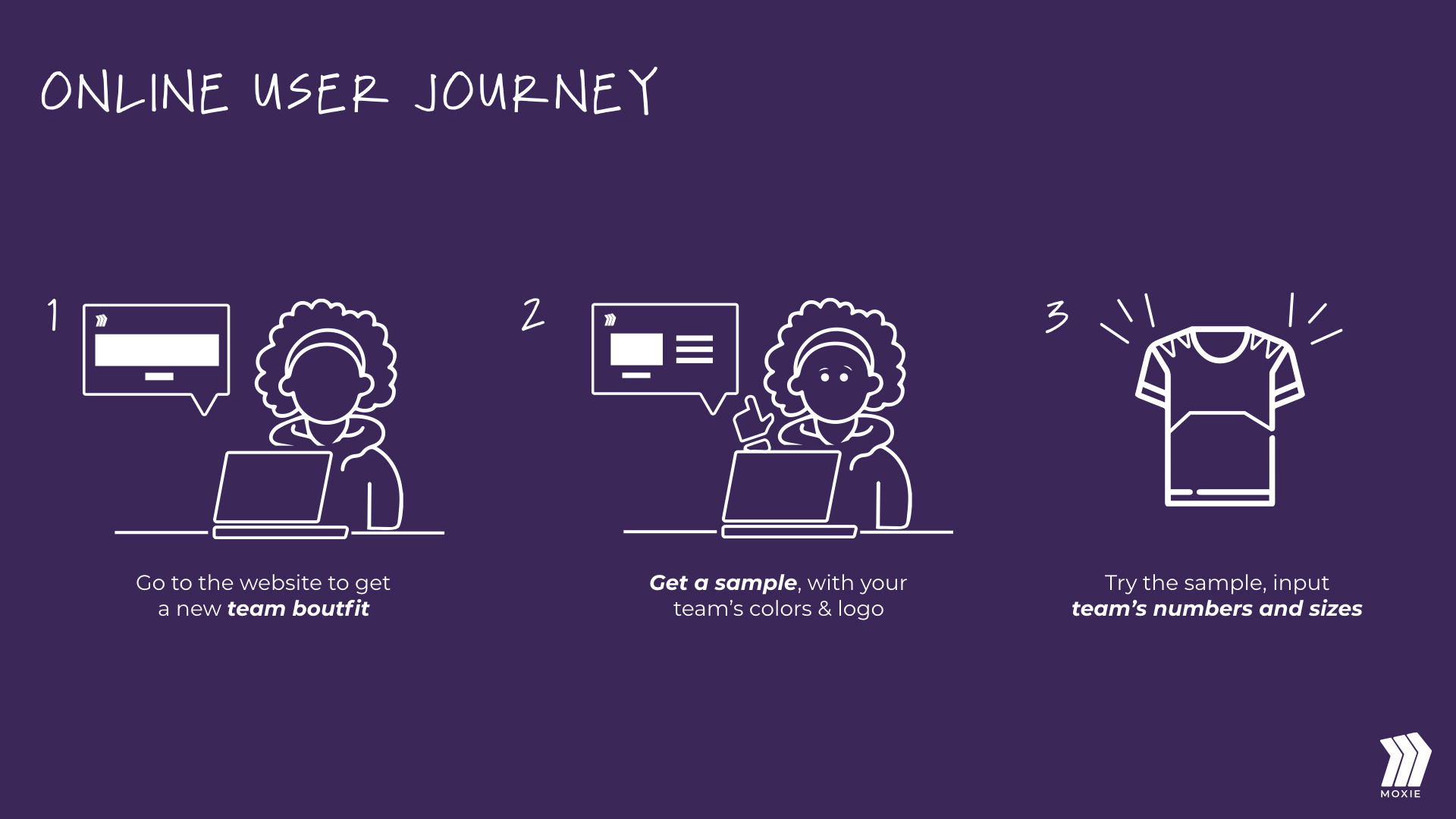

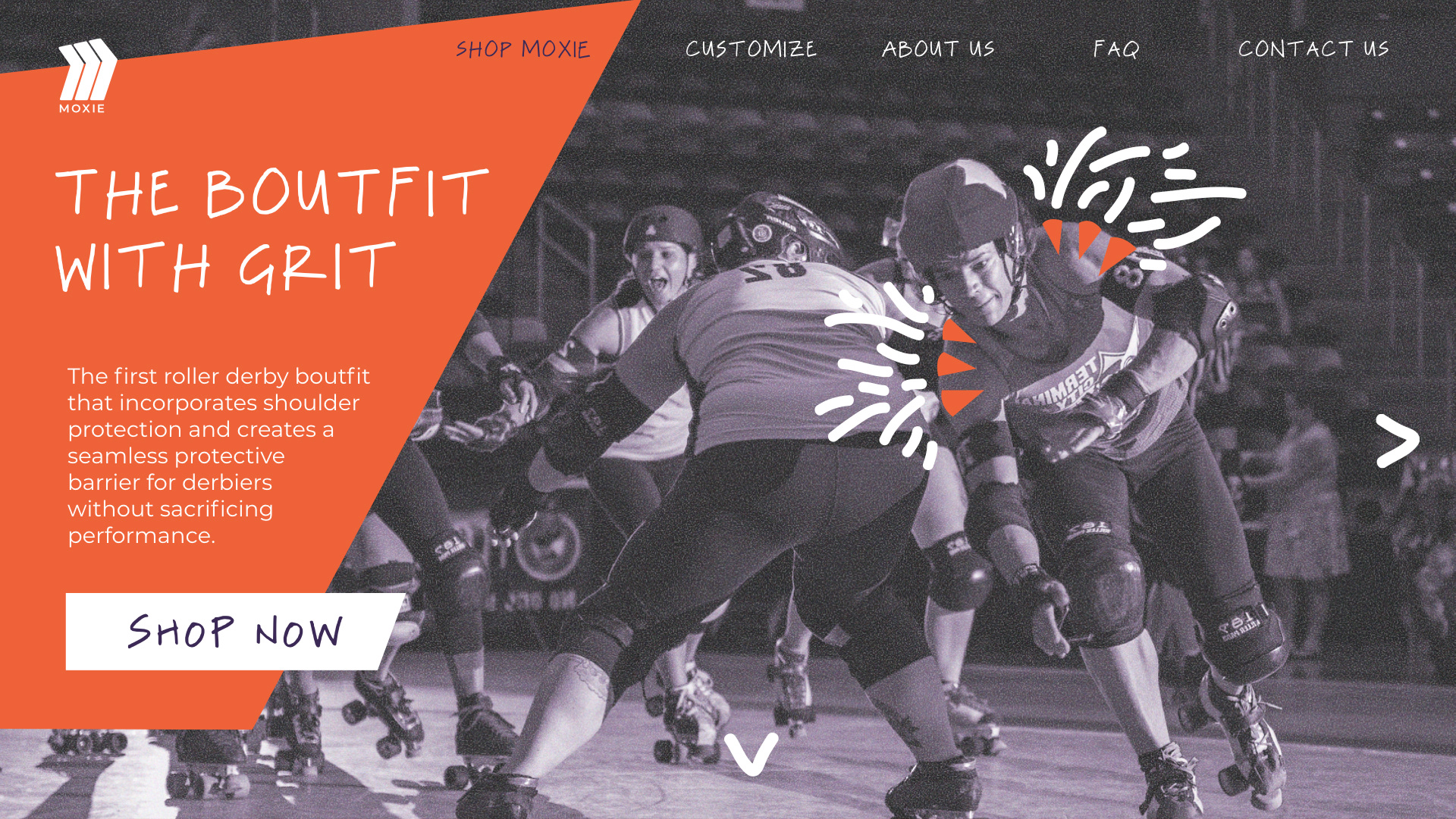

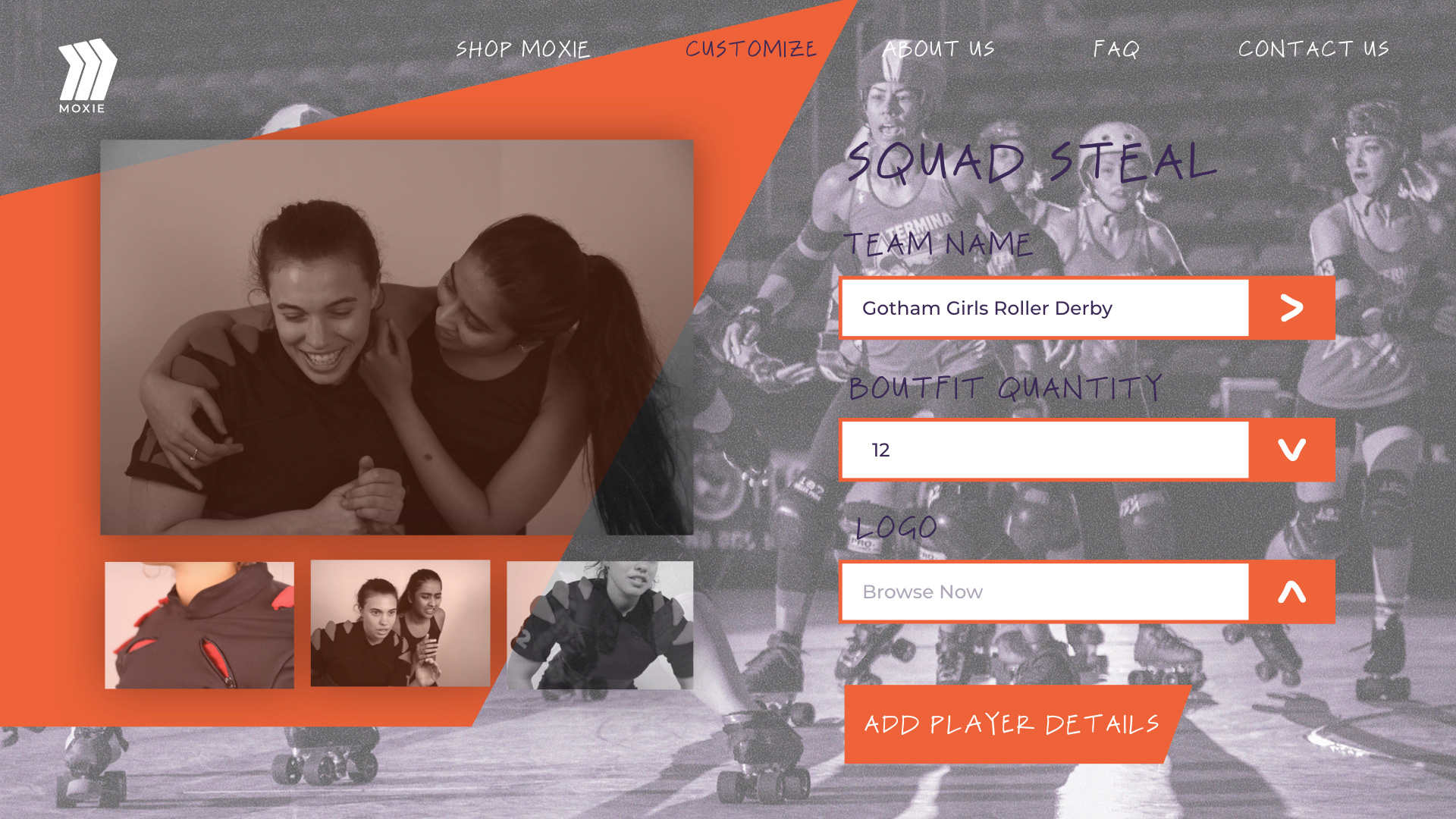
Rhea designed the website, our primary point of sale.
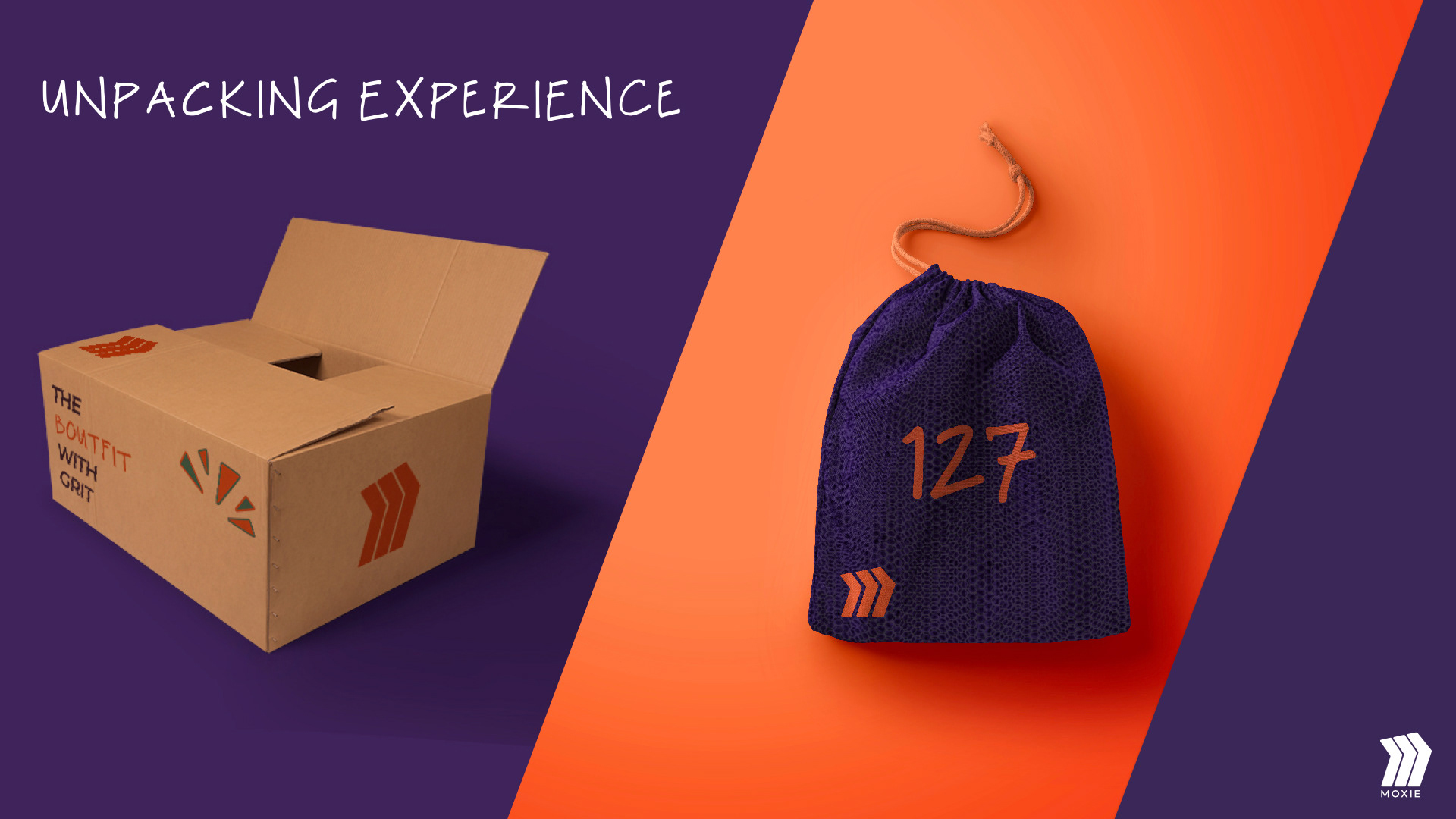
Sophie rendered this unboxing experience
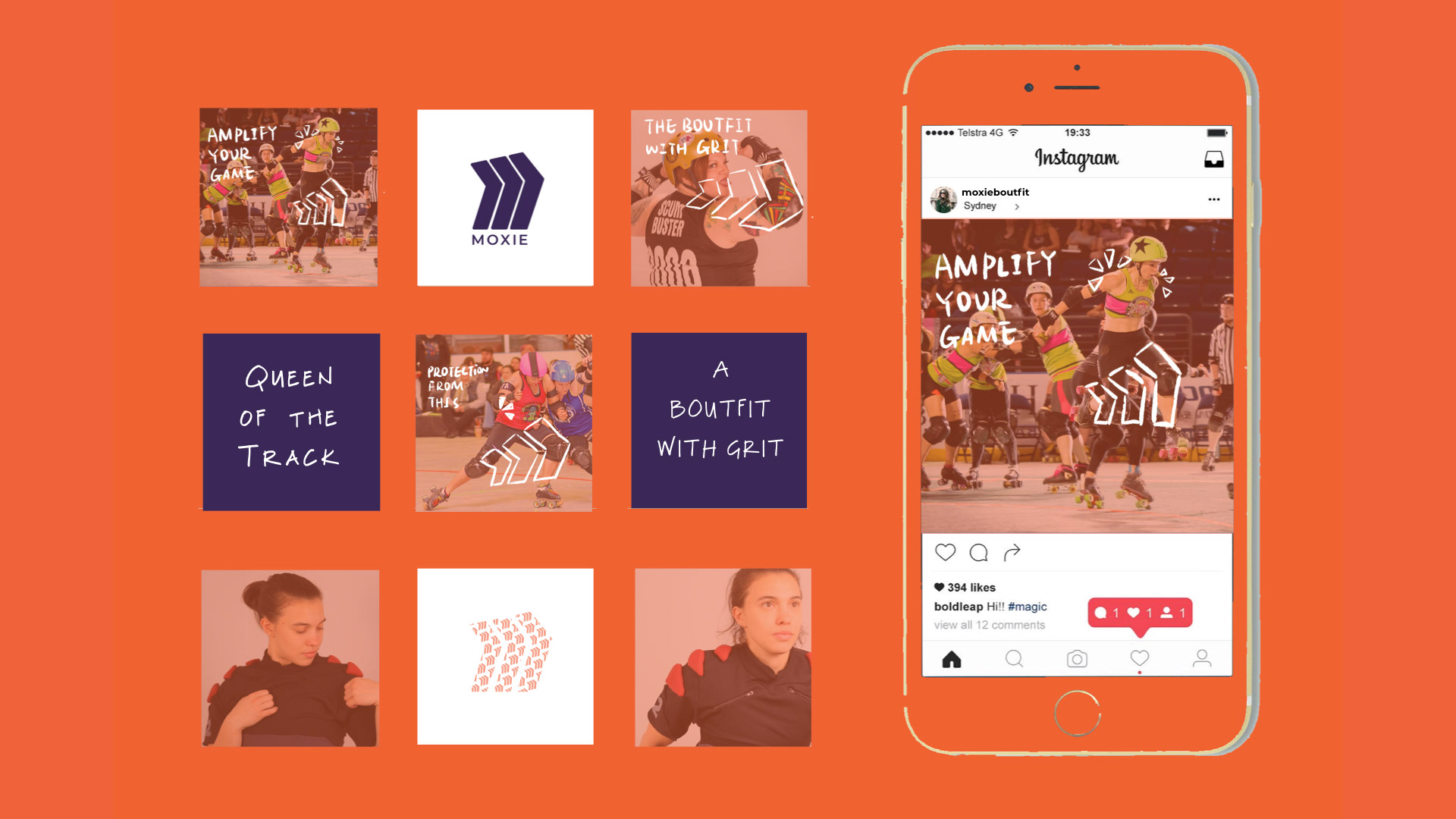
Rhea designed Moxie's social media
For Moxie's packaging, we designed numbered mesh bags. Each uniform would come in its own bag, which could then be used as a laundry bag after practices and tournaments.
Brick and mortar
The final step was to create a brick-and-mortar display for Moxie. We imagined bringing Moxie to bouts and the annual RollerCon to demo for the elite derby teams.
I worked on the final assembly of the display. Carly designed it and we all helped with fabrication.
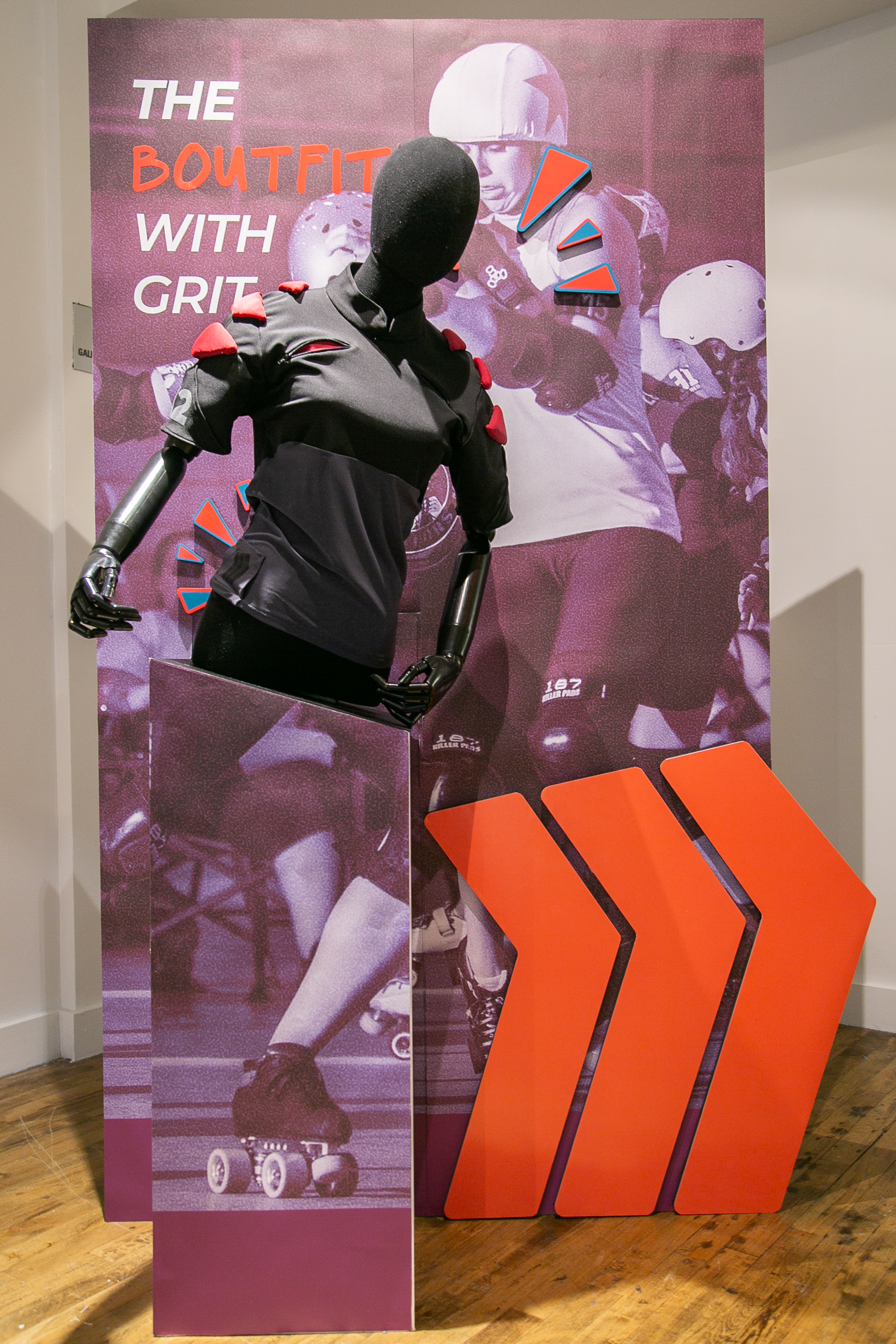

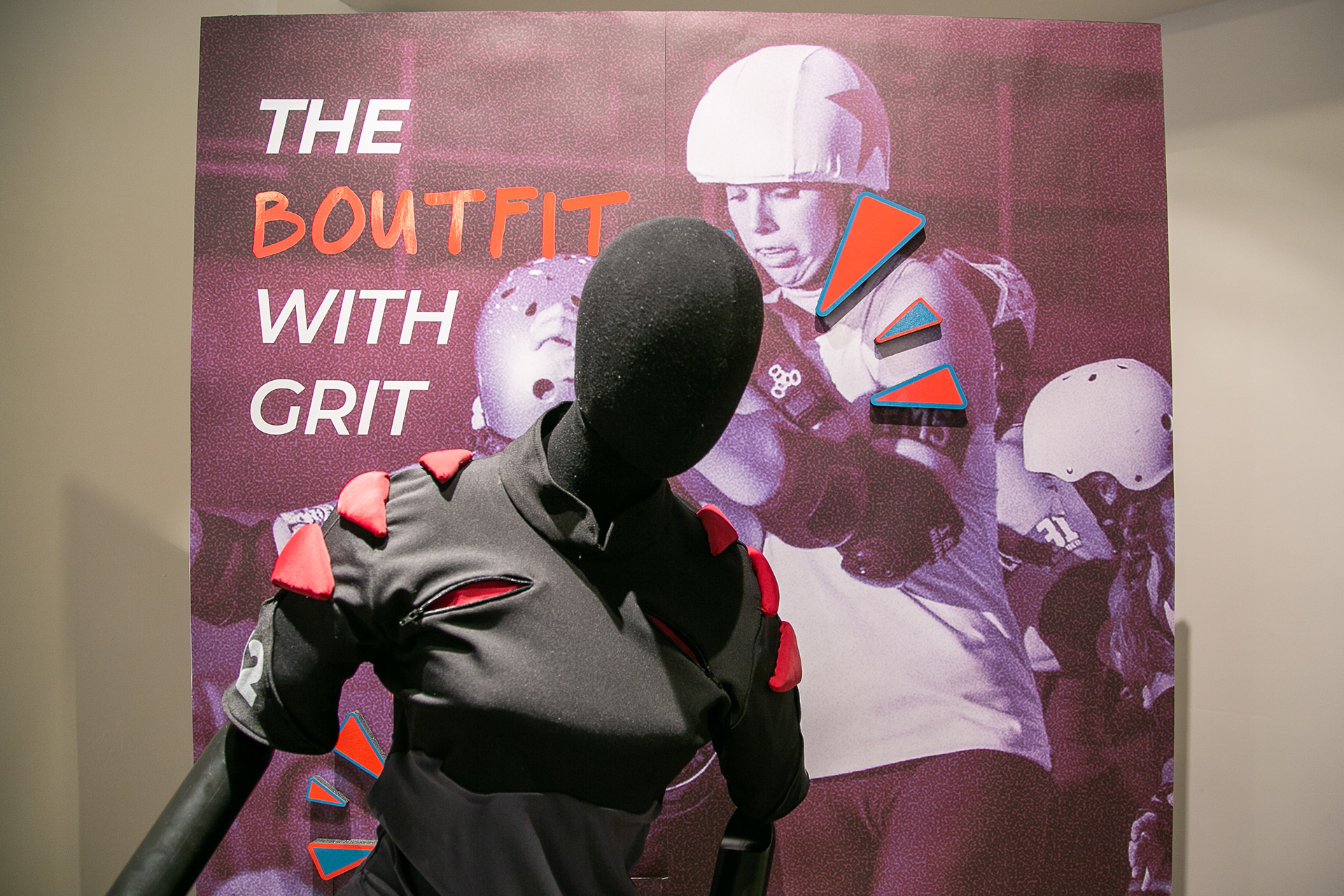
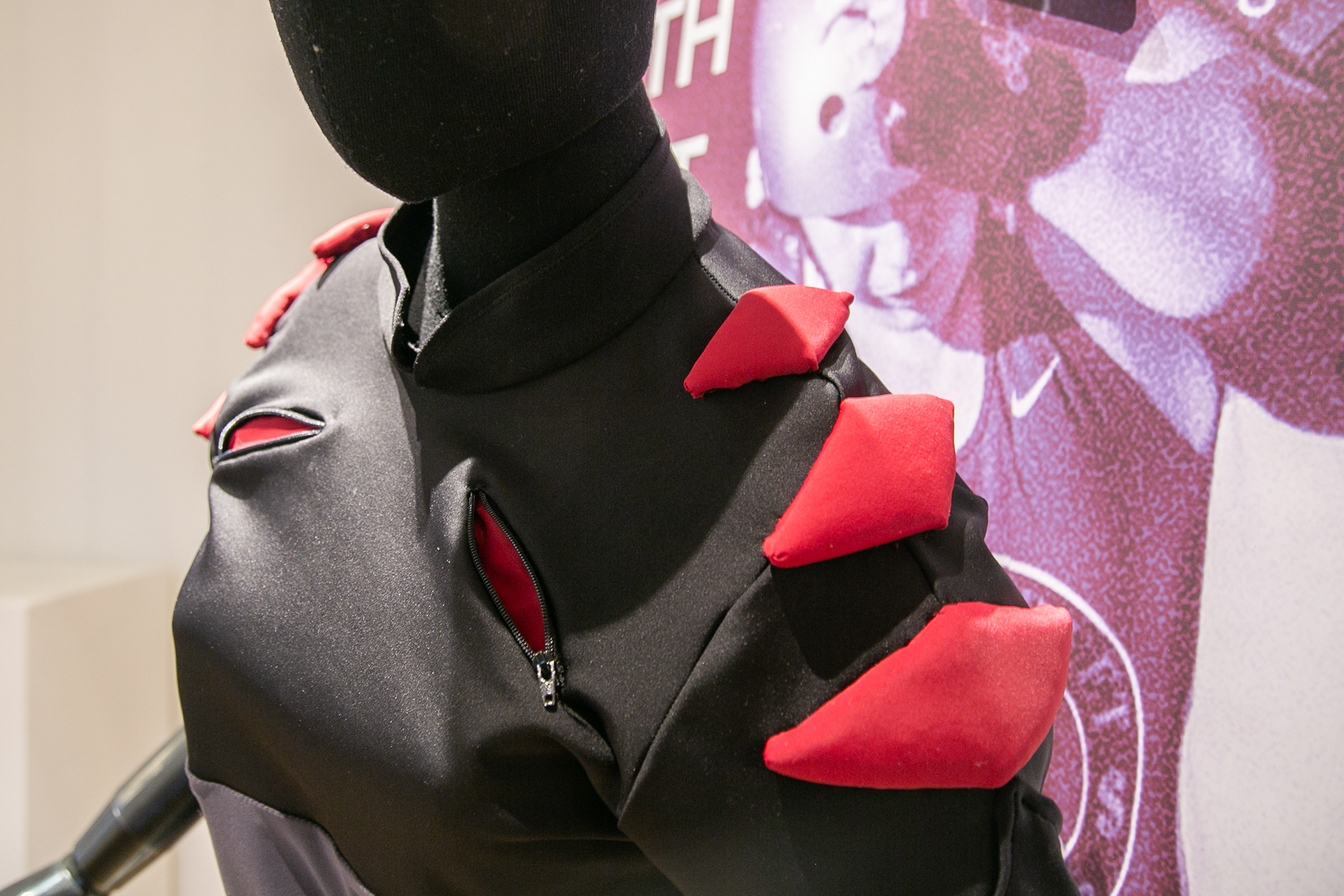
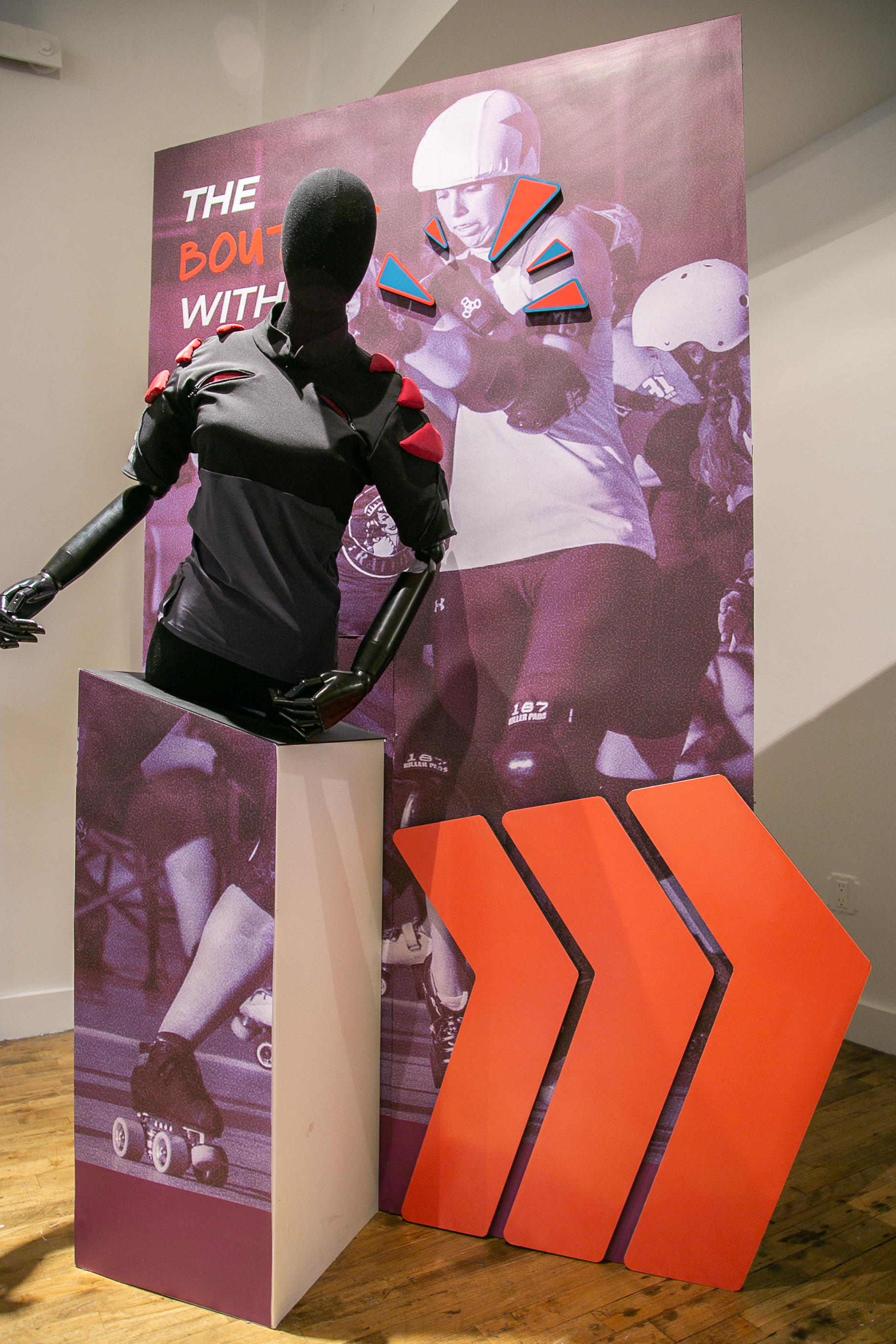
Go team
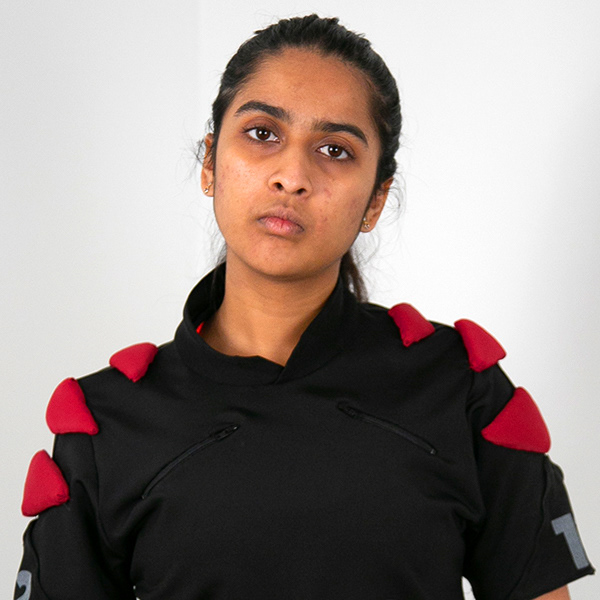
Rheal Bhandit
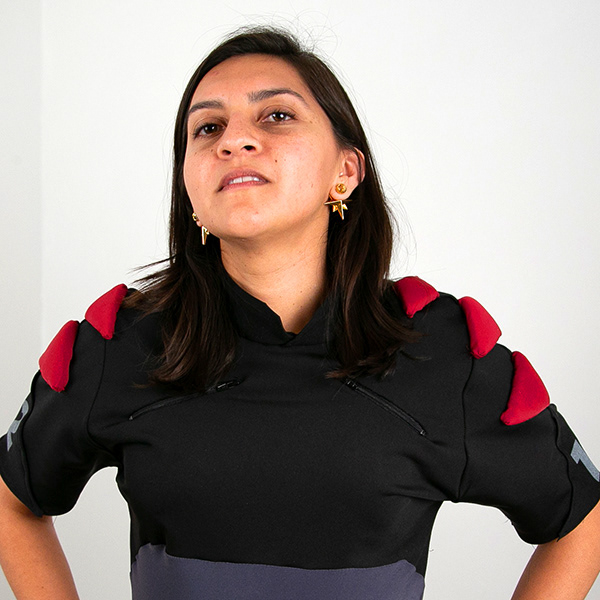
So-phast So-phurious

Carlamity
